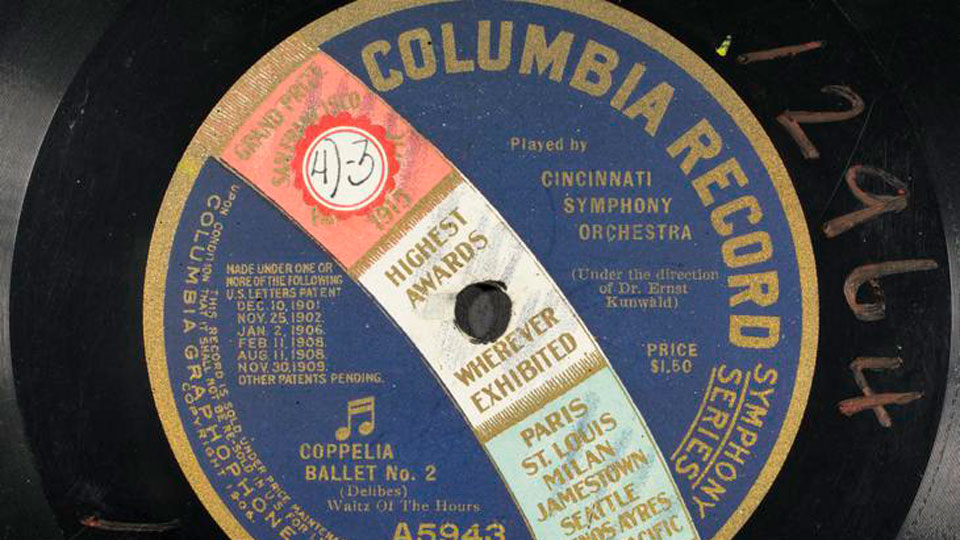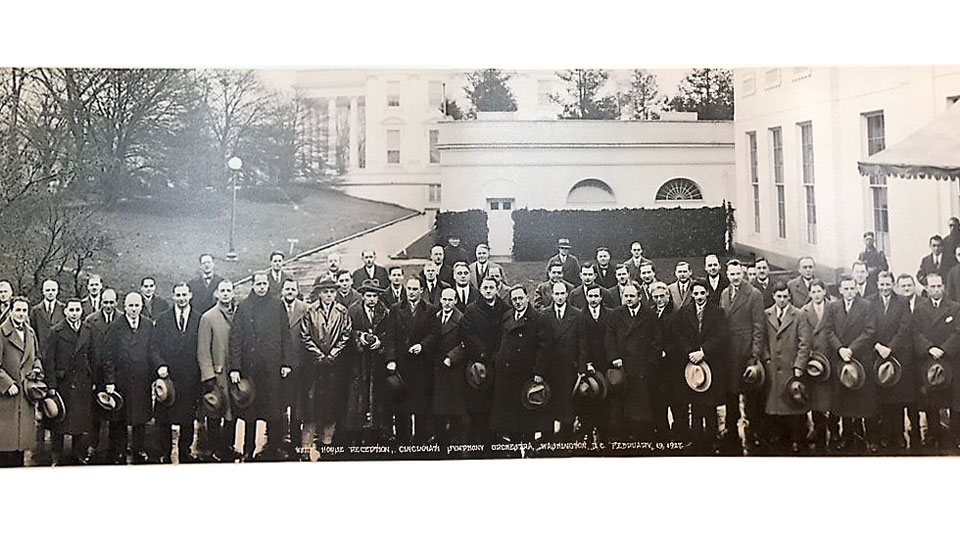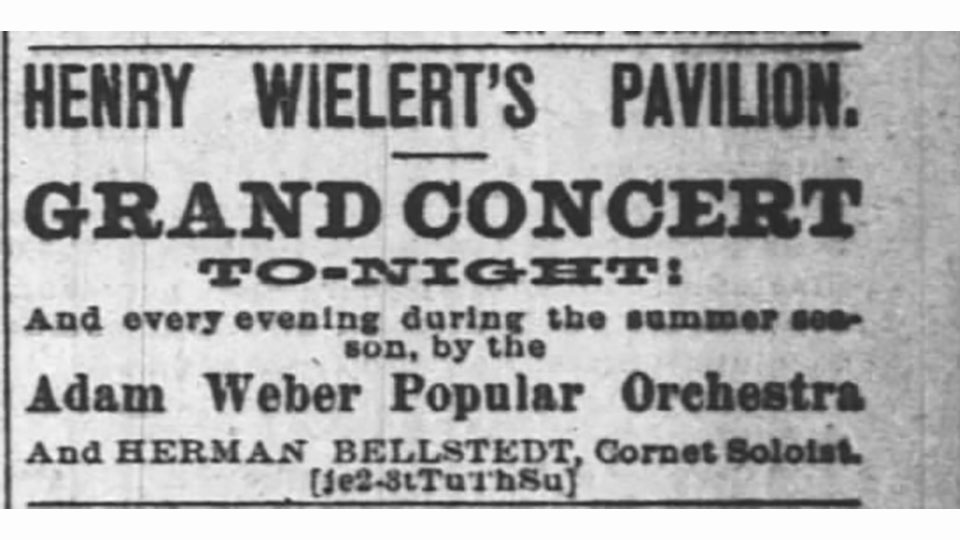

Mid 1800s: In the beginning, there was music
The first orchestras in Cincinnati include the Cincinnati Philharmonic, the College of Music of Cincinnati Orchestra, and the Cincinnati Grand Orchestra. The Cincinnati Grand Orchestra performs “popular” orchestral concerts in venues throughout the city including Pike’s Opera House (once located on Fourth Street between Vine and Walnut Streets in Cincinnati), Wielert’s Pavilion and Music Hall.

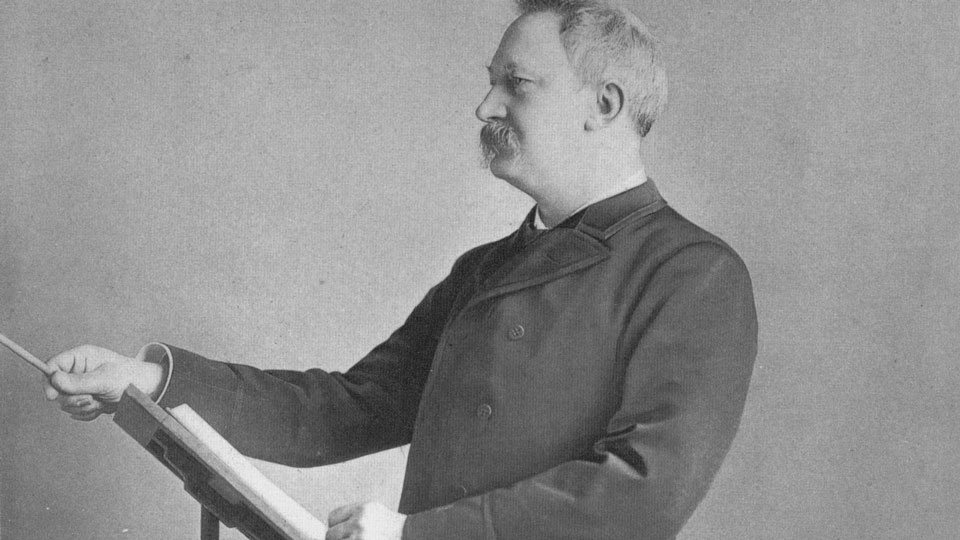
1873: Visionaries launch the May Festival
In 1873, a group of visionaries came together with the idea of presenting musical festivals in Cincinnati. These men and women conceived a festival that would transform the musical tastes of America and, at the same time, enhance Cincinnati’s image and national reputation.
Led by Music Director Theodore Thomas, the inaugural May Festival takes place in Saengerhalle in 1873. Thomas serves as the Festival’s Music Director until 1904. The Cincinnati May Festival continues today as the oldest choral festival in the western hemisphere—and as a thriving two-week festival every May that celebrates all forms of voice.

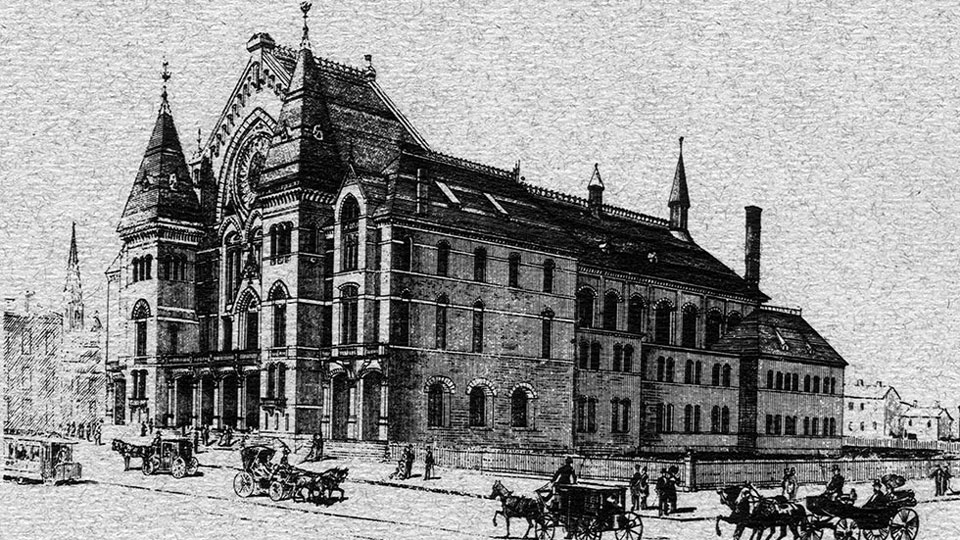
1878: Cincinnati Music Hall opens
Cincinnati’s iconic Music Hall opens on May 14, 1878, for the third May Festival, replacing the former Saengerhalle. The auditorium can seat 4,428, but 6,000 excited citizens squeeze in, with an estimated 10,000 listening outside through the open windows.

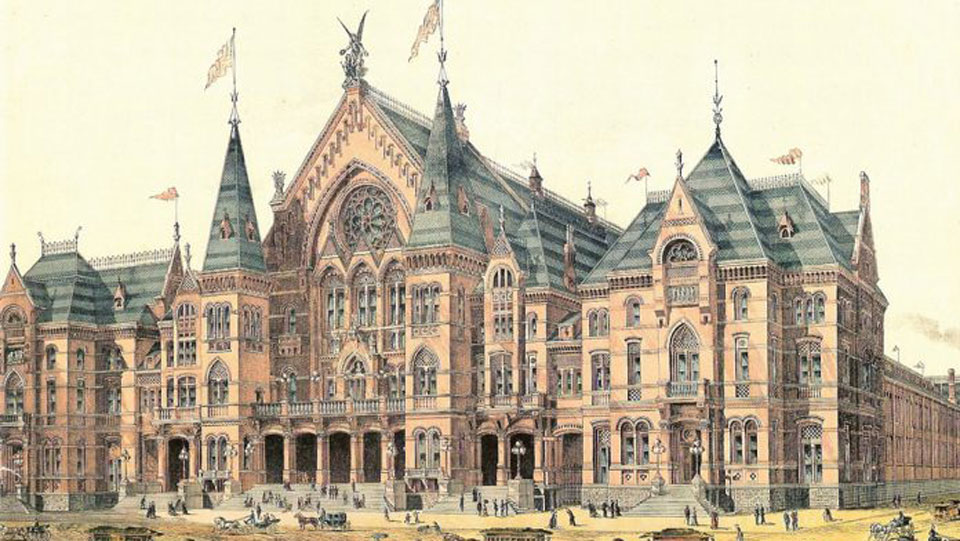
1879: Music Hall completed
On September 10, 1879, Music Hall’s North and South Halls open to complete the venue in time for its 7th Grand Industrial Exposition. President Rutherford B. Hayes, General William Tecumseh Sherman, and General Philip Henry Sheridan all make addresses.

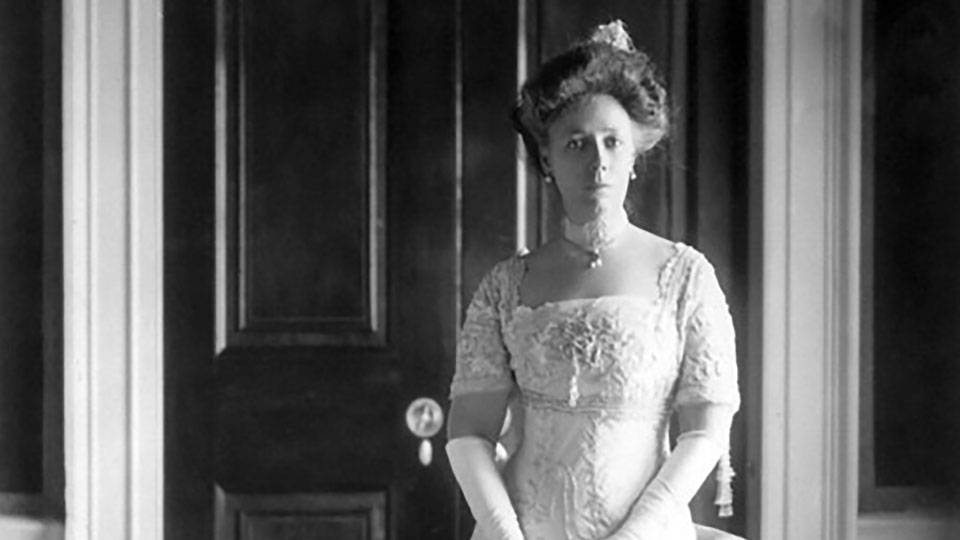
1891: The Power of Her
Fifteen prominent women, led by future First Lady of the United States Helen Louise "Nellie" Taft, form the Ladies Musical Club and raise $10,000 to bring the Boston Symphony Orchestra to Cincinnati. A professional orchestra for Cincinnati is in the works.

1895: The Cincinnati Symphony Orchestra is born
The Cincinnati Orchestra Association Company is formed with Nellie Taft as President of the Board. The ensemble is hired and the first concert on January 17, 1895, is led by Frank Van der Stucken at Pike’s Opera House. Frank Van der Stucken went on to conduct two more concerts in 1895 before being named Music Director for the second season in 1895-96.
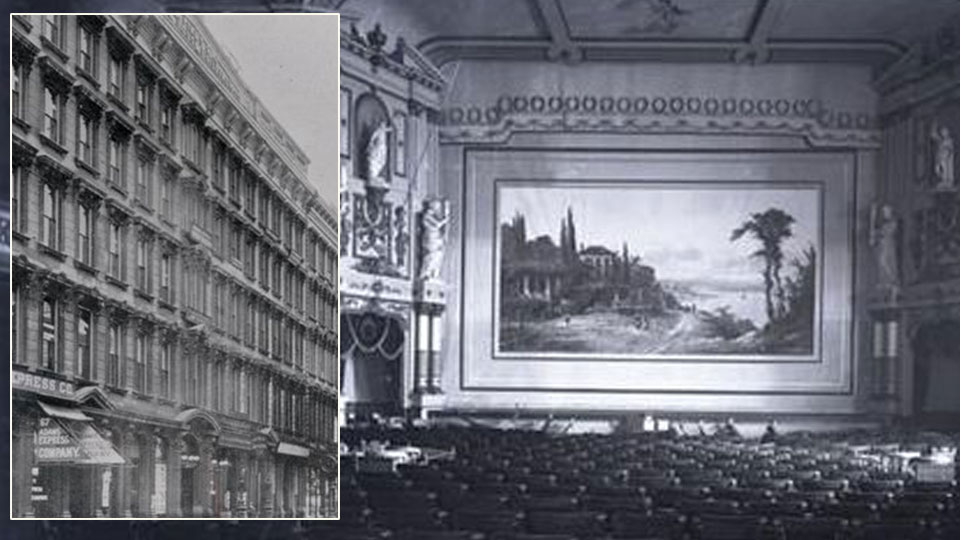
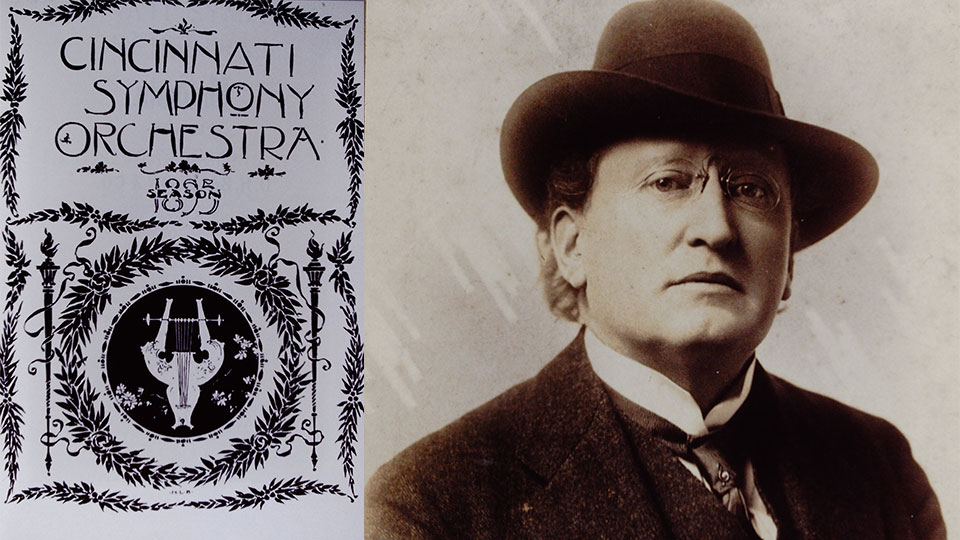

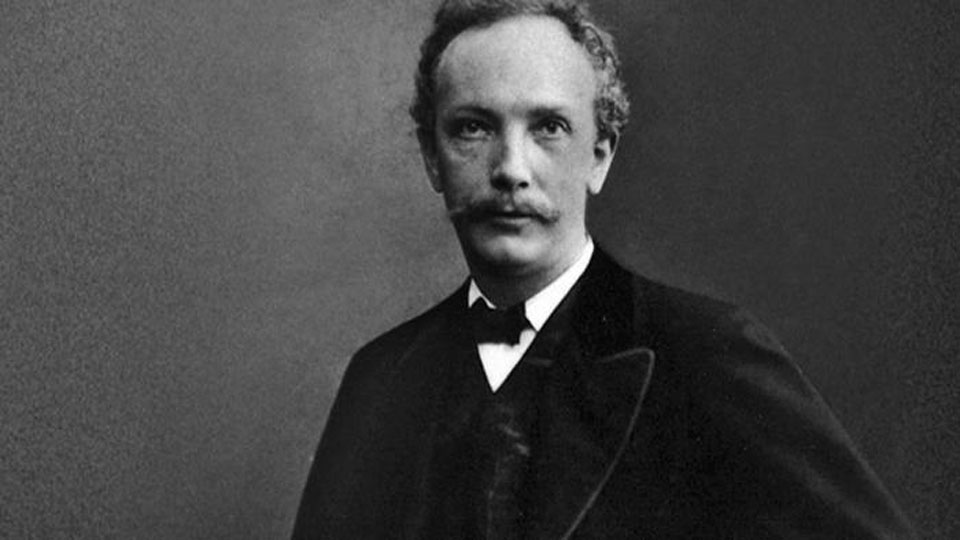
1904: Richard Strauss conducts the CSO
Richard Strauss conducts the CSO on April 8, 1904, in a program at Music Hall that opens with Tchaikovsky's Symphony No. 5 in E minor. The rest of the program is compositions by Richard Strauss and includes Don Juan, 6 Songs for Soprano Orchestra (Das Rosenband, Liebeshymnus, Morgen, Cäcilie) and finished with Tod und Verklärung. His wife, Pauline Strauss de Ahna, is the soloist on the program.

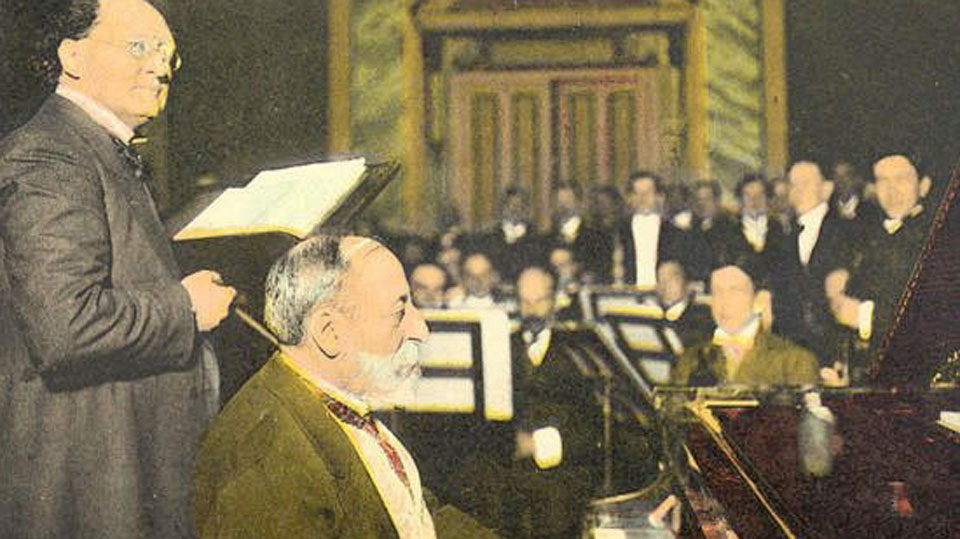
1906: The French Connection
With Frank Van der Stucken conducting, Camille Saint-Saëns performs with the CSO: La Jeunesse d'Hercule, Poème Symphonique, Phaéton, Danse macabre, and Suite algérienne. Camille Saint-Saëns performs Concerto No. 5 in F Major for Piano and Orchestra (Egyptian), Allegro appassionato for Piano and Orchestra, and Wedding Cake Caprice-Valse for Piano and String Orchestra with the CSO at the piano.

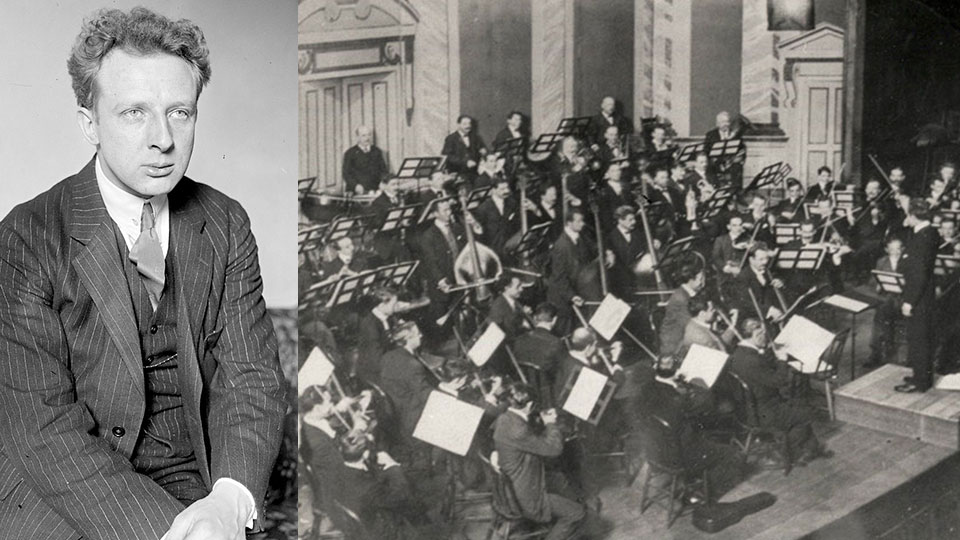
1909: A new beginning
Following a labor dispute and work stoppage for the Orchestra in 1907, the ensemble is reconstituted. Leopold Stokowski campaigns to win the position and becomes Music Director of the CSO at age 27 and goes on to have a legendary career on the conducting podium.
Read more about Stokowski's career with the CSO.
Collaborators during Stokowski’s tenure include conducting legendary pianist and composer Sergei Rachmaninoff, performing his Piano Concerto No. 2 in January 1910.

1912: A change in venue
Following the opening of the Emery Theater, built specifically for orchestra performances, Ernst Kunwald becomes the CSO’s third Music Director. Among his achievements is winning a heated race with the Philadephia Orchestra to perform the U.S. premiere of Richard Strauss’ An Alpine Symphony in 1916. CSO continued to perform popular concerts at Music Hall while substituting at the Emery Theater. See the October 2019 Fanfare for more locations of the CSO.
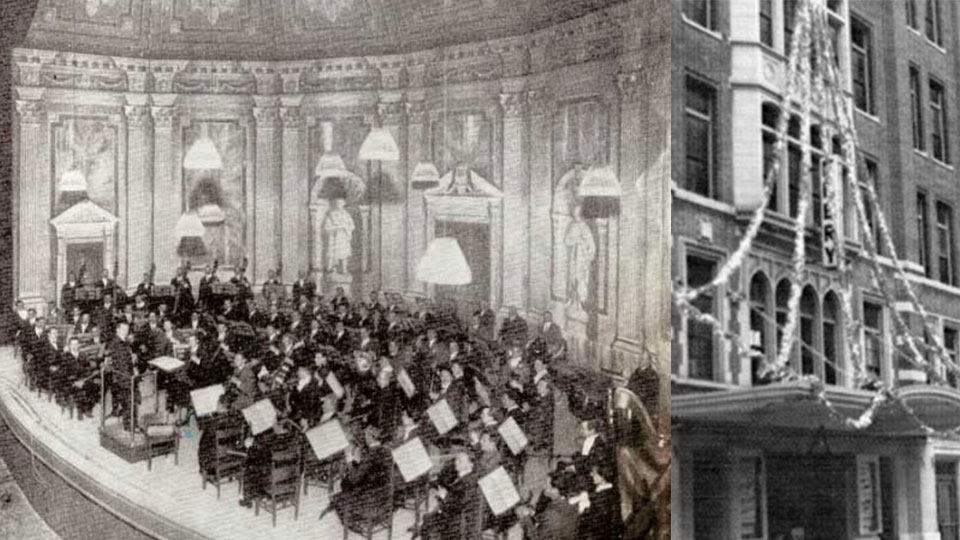
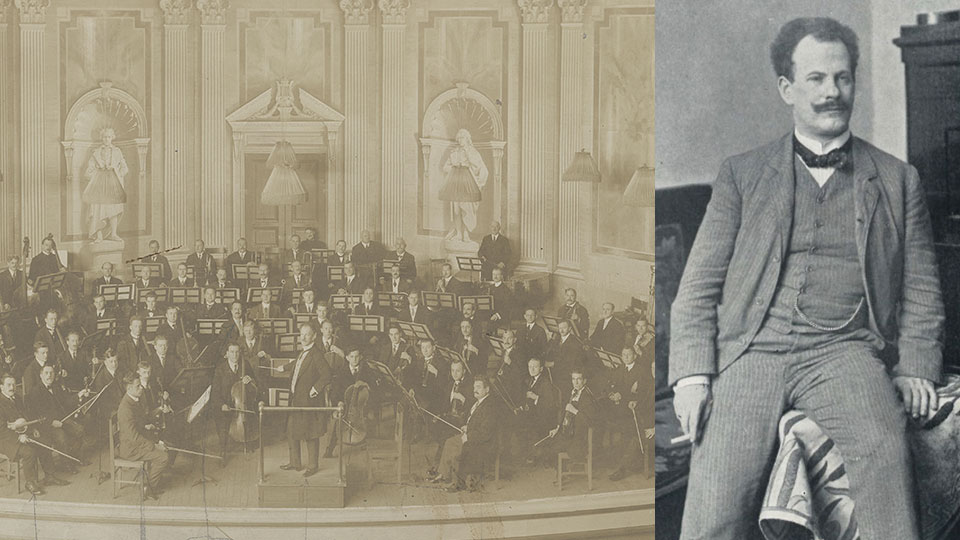
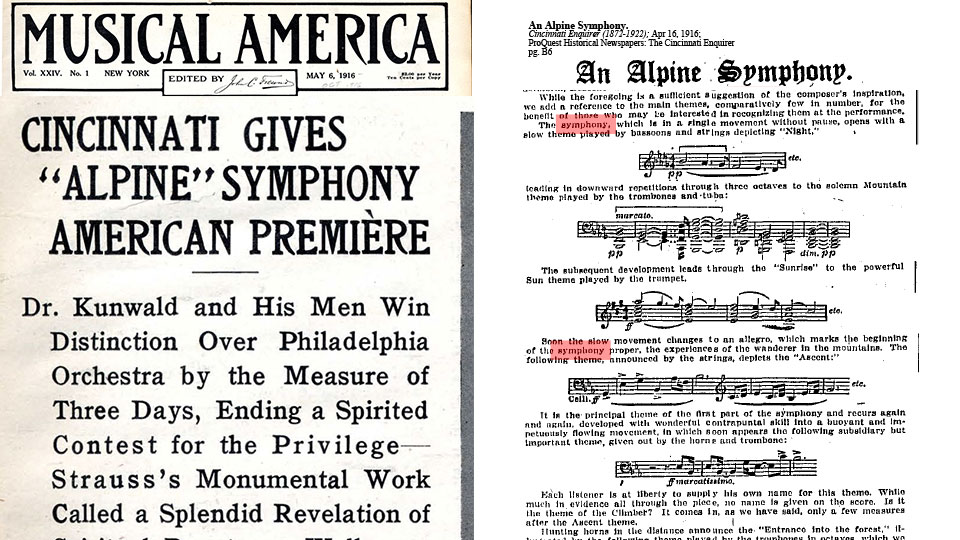

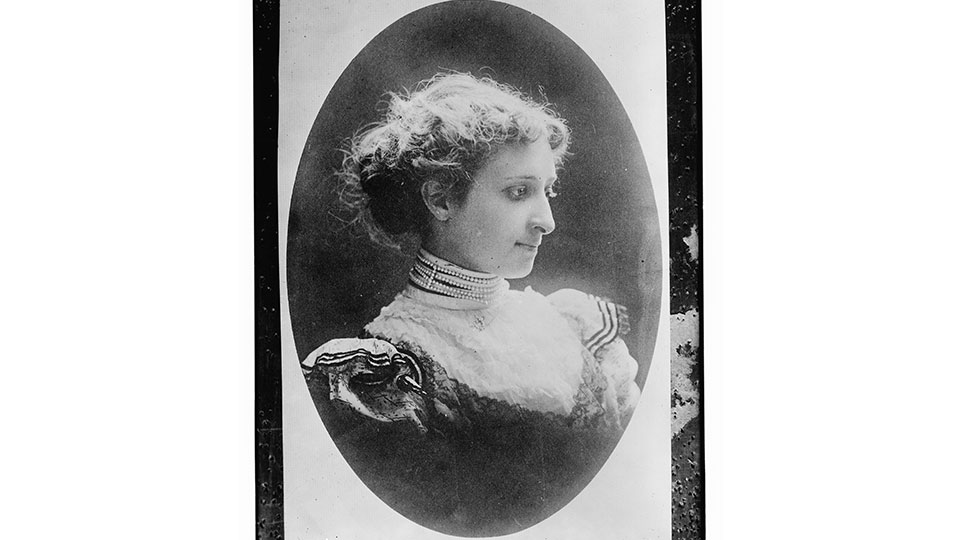
1915: For the love of music
Cora Dow, renowned female pharmacist and owner of the pharmacy chain, passes away and leaves the Orchestra the equivalent of $16 million in today’s money.

Recording music 1917 vs 2019
1917: CSO at Columbia Gramophone Company Studios, NYC. One large horn to record the entire orchestra.
2019: Recording engineers set up individual microphones on the stage of Music Hall to record Gershwin's An American in Paris.
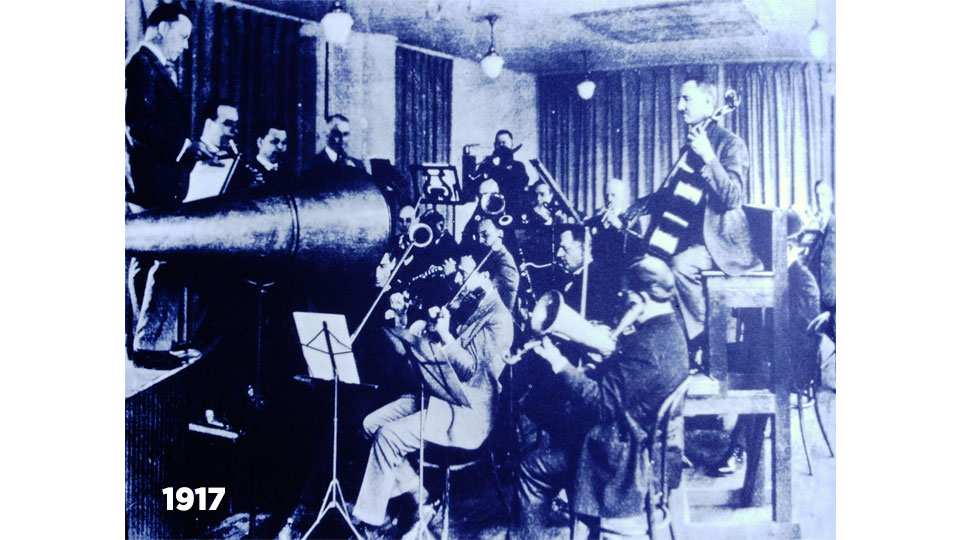
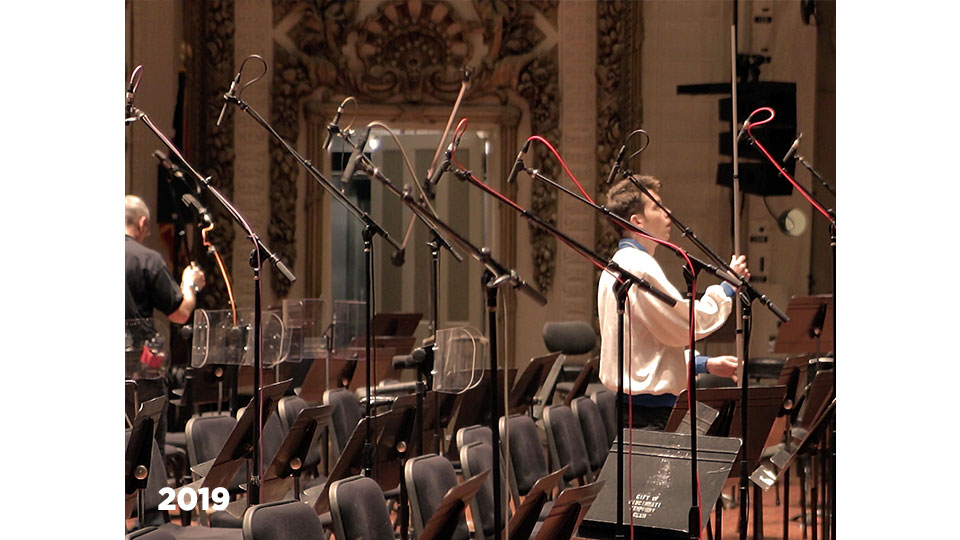

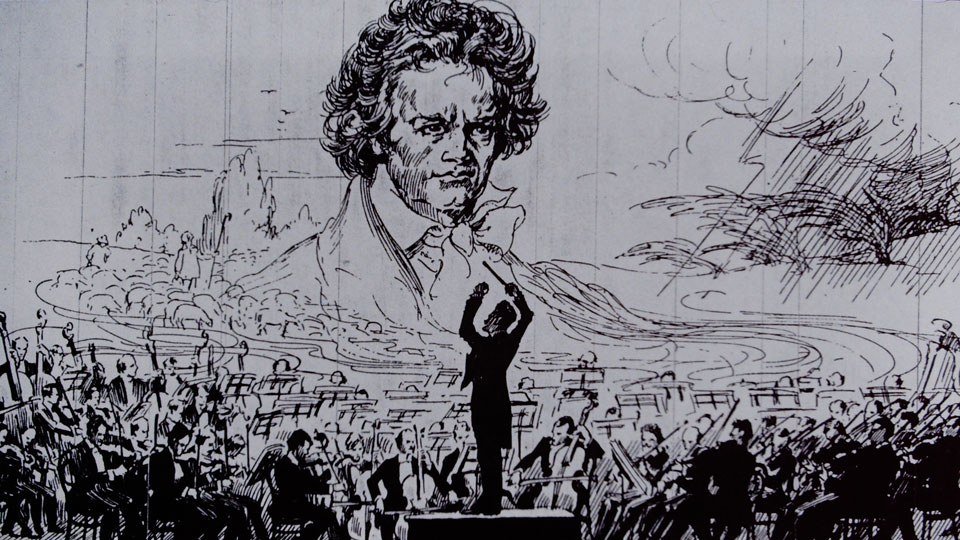
1917: Cincy in NYC
Following the CSO’s debut at Carnegie Hall in 1917 performing Beethoven, a critic proclaims that Beethoven’s "spirit seemed to rise above the players."
Legendary tenor Enrico Caruso also makes his orchestral debut with the CSO.

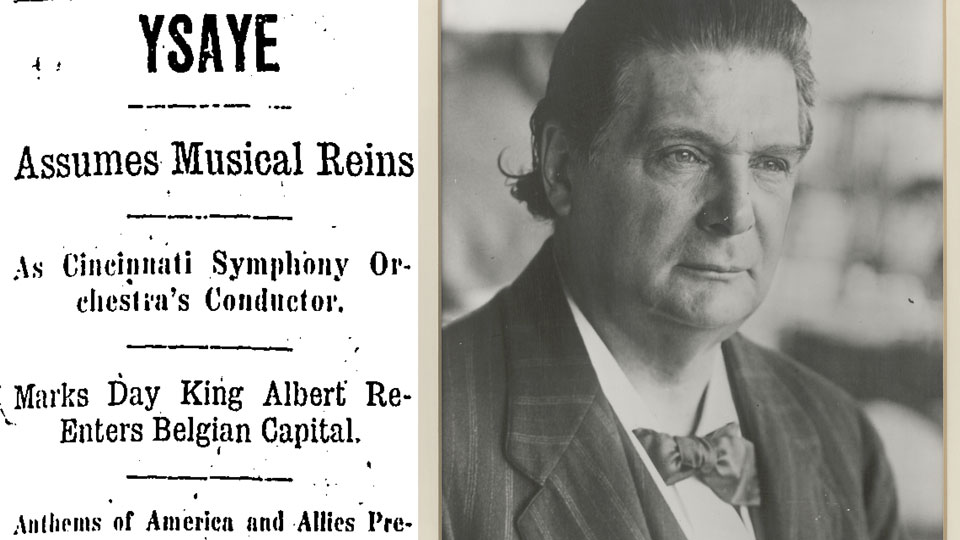
1918: A famed virtuoso takes the podium
One of the most acclaimed violinists of the era, Eugène Ysaÿe becomes the CSO’s fourth music director. In the aftermath of the First World War (1914–1918) Ysaÿe’s concert programs took on patriotic themes. His tenure included successful touring engagements throughout the United States, increasing the fame of the Orchestra.

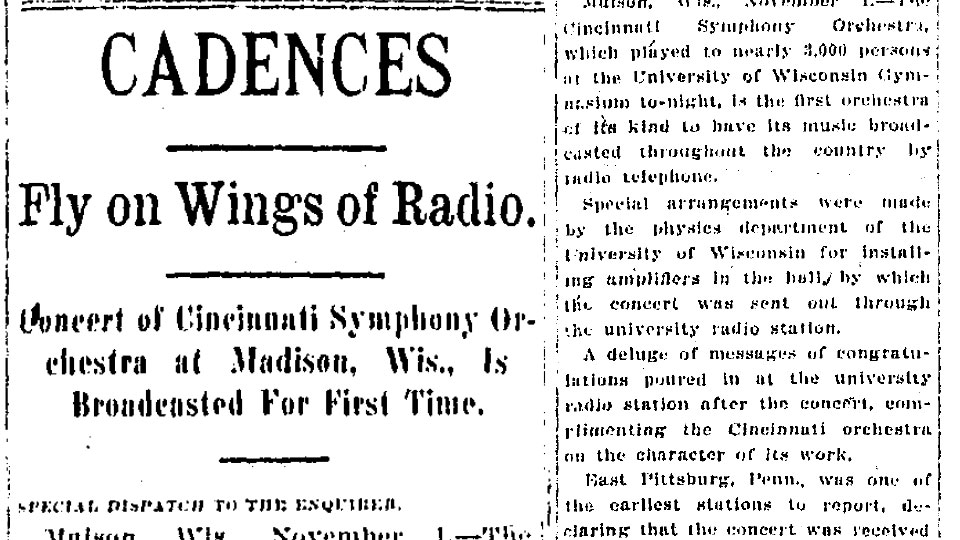
1921: First to be live on air
In November, Wisconsin’s 9XM carries the first live broadcast of an orchestra performance by the Cincinnati Symphony Orchestra—from the University of Wisconsin Armory in Madison, using a single microphone. The concert was led by CSO Music Director Eugene Ysaÿe. It was reported that President Warren Harding, an Ohioan, tuned in to hear the broadcast which could be heard as far away as New York.
Concertmaster Emil Heermann later recounts how excited members of the orchestra were about this important first, saying, “It was a new experience for all of them."
Today, the Orchestra reaches millions of listeners across the country and even around the world annually through national radio broadcasts and streaming. It is a legacy born on that autumn day in 1921 while the CSO was on tour in Wisconsin.

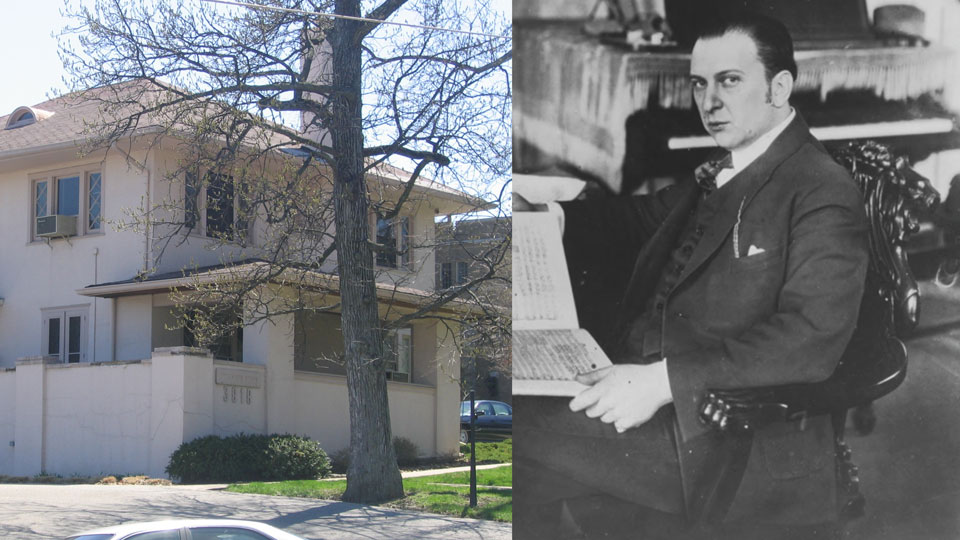
1922: Fritz Reiner ushers in new era of collaborations
Fritz Reiner becomes the CSO’s fifth music director, beginning a nine-year tenure. His inaugural concert includes Beethoven's Leonore Overture No. 3, Brahms' Symphony No. 4 in E Minor, Wagner's "Prelude and Liebstod" from Tristan und Isolde, and Prelude to Act I of Die Meistersinger von Nürnberg.
Photo: Reiner peers over a score in the music room, 3818 Winding Way, Cincinnati, ca. 1925 Source: Fritz Reiner Collection, Deering Music Library, Northwestern University. Courtesy of the Fritz Reiner Society.

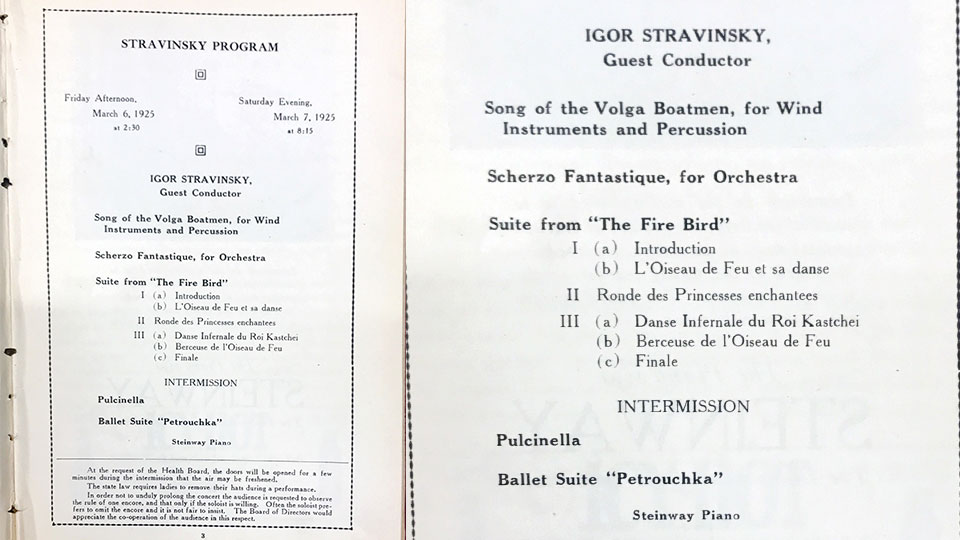
1925: A musical rebel with a cause debuts in the Queen City
Groundbreaking composer Igor Stravinsky makes his CSO debut, conducting a program of his own works including his Suite from The Firebird. He returns to conduct the CSO two more times, including 1940 to conduct his own The Rite of Spring.

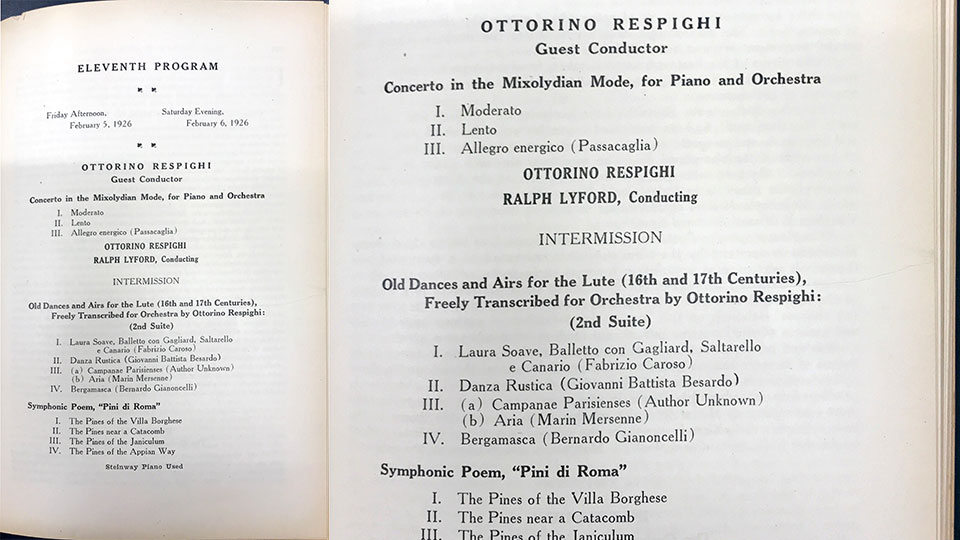
1926: The seven hills of Rome meet the seven hills of Cincinnati
Legendary composer Ottorino Respighi guest conducts the CSO in his iconic tone poem, The Pines of Rome.

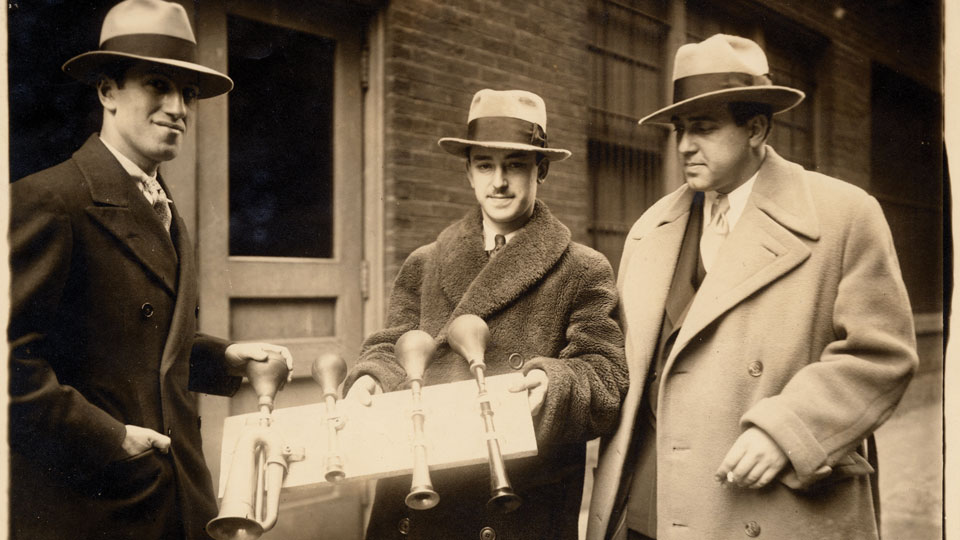
1927: From Paris to Cincinnati
George Gershwin makes his CSO debut as a pianist performing his own composition, Rhapsody in Blue.
Gershwin returns in 1929 following the world premiere of An American in Paris in New York. The composer brings his taxi horns to Cincinnati to supervise the second performance of the work with the CSO at the Emery Theater.
Decades later, the CSO performs the world premiere of the critical edition of An American in Paris while on tour in Paris in 2017, and subsequently records the work for the 2019 Grammy-nominated album, Transatlantic.


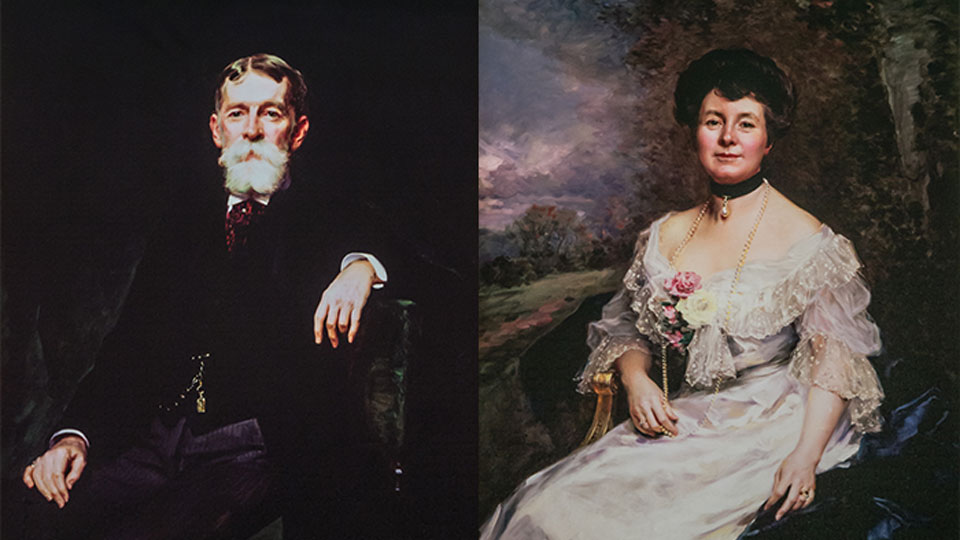
1927: United we stand
The Cincinnati Institute of Fine Arts is founded by Charles P. and Anna Sinton Taft in 1927 to create a united arts fund. The Tafts believe that Cincinnati will truly distinguish itself through its arts and cultural assets, including the CSO. They offer a $1 million endowment if the community matches it with $2.5 million. The community responds favorably and the endowment is created. Today this funding organization is known as ArtsWave.
 1928: Notable collaborations continue
1928: Notable collaborations continue
Pianist and groundbreaking composer Béla Bartók performs his second Piano Concerto with the CSO and Fritz Reiner in February. While in Cincinnati, Bartók autographs the Baldwin Piano ad featuring his likeness in the program book.
Two years later in 1930, John Philip Sousa guest conducts the CSO in his own Stars and Stripes Forever and El Capitan. That same program features Fritz Reiner conducting the world premiere of Respighi's orchestration of Bach's Prelude and Fugue in D Major, which the composer has dedicated to Reiner.
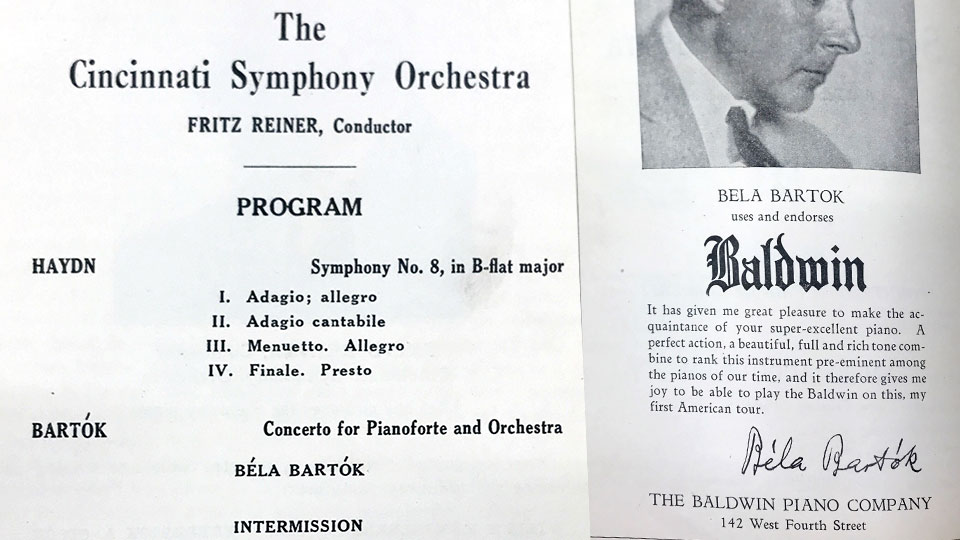
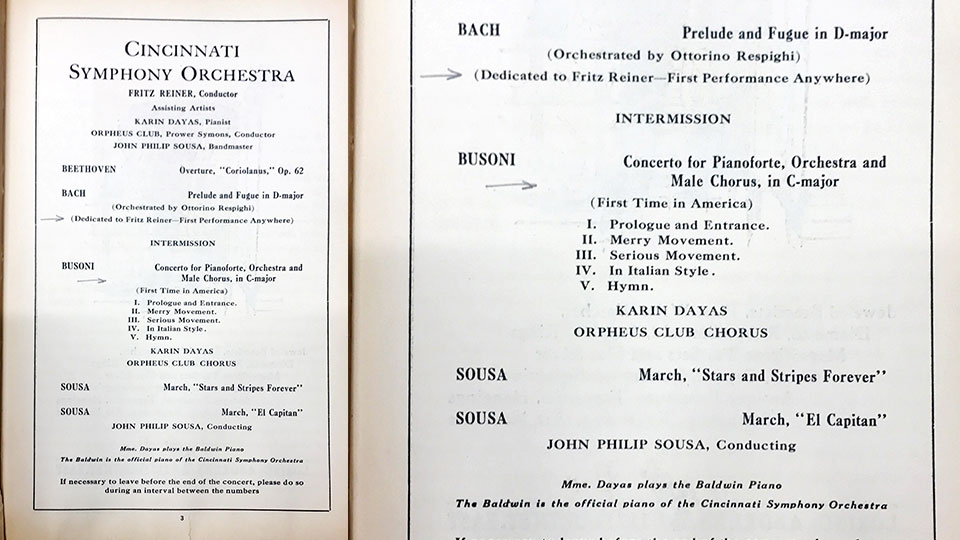

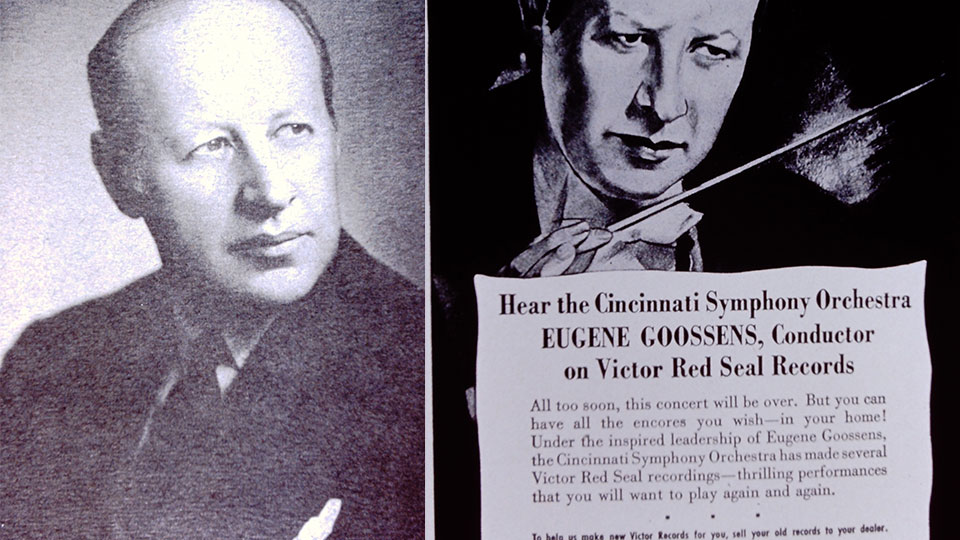
1931: Eugene Goossens and the return to Music Hall
Eugene Goossens’ extraordinary 16-year tenure as Music Director begins in 1931 and spans a tumultuous time in world history. Collaborations during his time as Music Director include Aaron Copland, Leonard Bernstein, Rudolf Serkin, Gregor Piatigorsky and Darius Milhaud.
Five years into Goossens’ tenure, the CSO returns to Music Hall in 1936. With the exception of the 2016-17 season at the Taft Theatre when Music Hall was under renovation, the CSO has performed at this architectural treasure ever since.

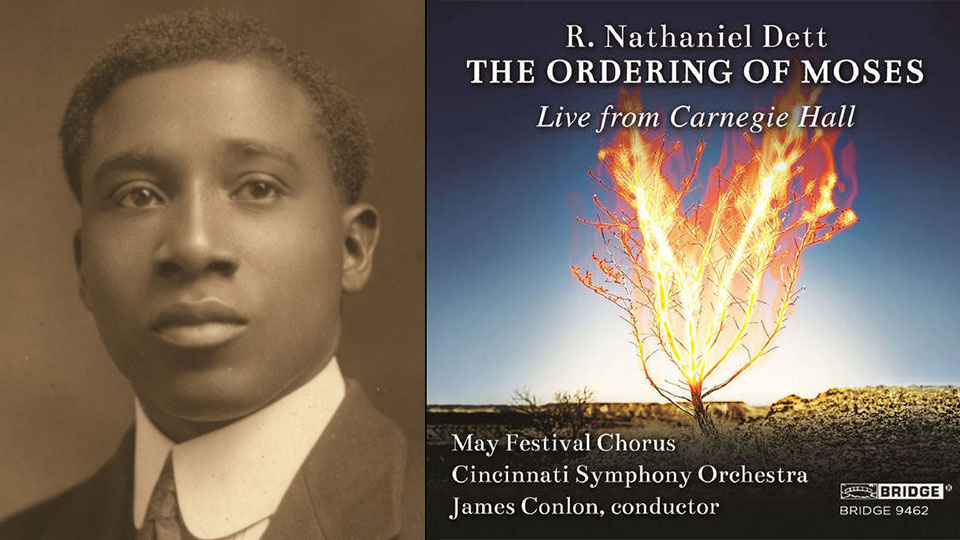
1937: Breaking down barriers
During the 1937 May Festival, the CSO under Eugene Goossens gives the world premiere of Robert Nathaniel Dett’s oratorio, The Ordering of Moses, at Music Hall. The performance is carried live on the national radio airwaves via NBC, but the broadcast abruptly stops midway following racially motivated complaints.
Years later in 2015, The Ordering of Moses is recorded live at Carnegie Hall by the May Festival and Cincinnati Symphony Orchestra under the direction of James Conlon, complete with the original interruption from the 1937 broadcast.

1943: A fanfare for the ages
As part of a “Fanfare Project” calling for music to bolster morale during World War II, CSO Music Director Eugene Goossens commissions Aaron Copland’s Fanfare for the Common Man which is premiered in Cincinnati on March 12, 1943. It's an iconic work heard around the world in concert halls and has become part of the popular culture soundscape. Goossens commissions 18 fanfares in total.
The CSO also notably gives the world premiere performance of Copland’s Lincoln Portrait in 1942.

1944: Seeking new voices
Composer William Grant Still, often referred to as “the Dean” of African American composers, wins the CSO’s Jubilee prize for “Best Overture” to celebrate the Orchestra’s 50th anniversary with a work called Festive Overture in 1944. His prize is a $1000 War Bond.
Read The New York Times article from 1944
A year later in 1945, a young Leonard Bernstein makes his CSO debut both performing Ravel’s Piano Concerto and conducting the Orchestra. He returns in 1946 and 1947, and years later, as the now legendary Leonard Bernstein, he conducts the CSO in 1973 as the Cincinnati May Festival’s Honorary Music Director.
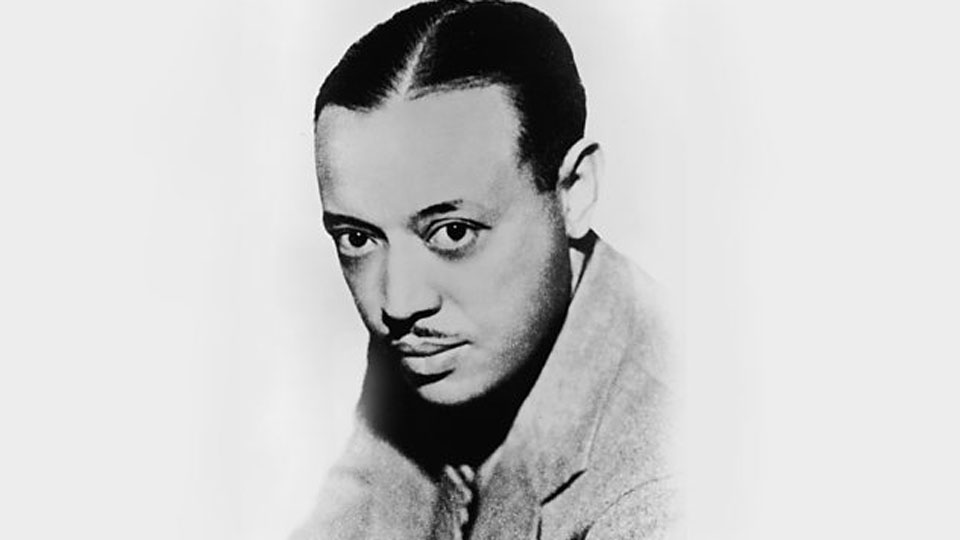
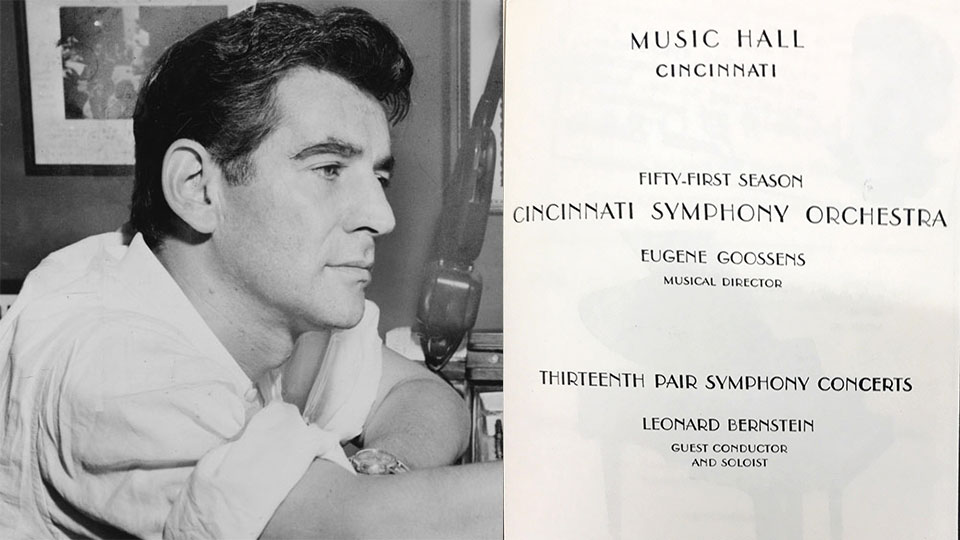

1947: Beyond the concert hall
Music Director Thor Johnson’s 11-year tenure begins 1947 and includes the introduction of Neighborhood Family Concerts as well as an increase in Young People’s and Junior High concerts. During his time as Music Director, Johnson conducts the CSO in premieres of 120 American and European works, half of which he commissions.
In January of 1952, Johnson invites the legendary contralto and groundbreaking artist Marian Anderson to perform with the CSO for the first time. She returns to perform again with Johnson and the CSO in 1954.
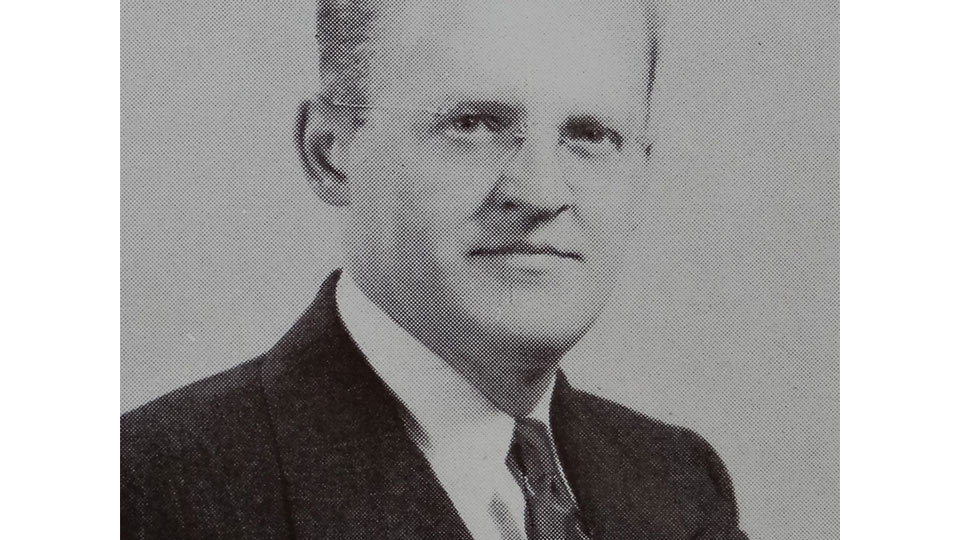
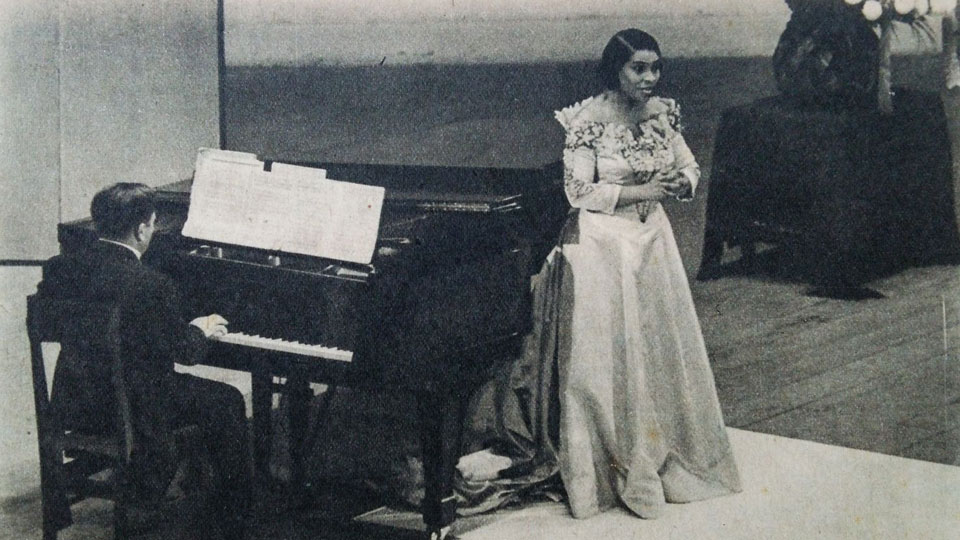

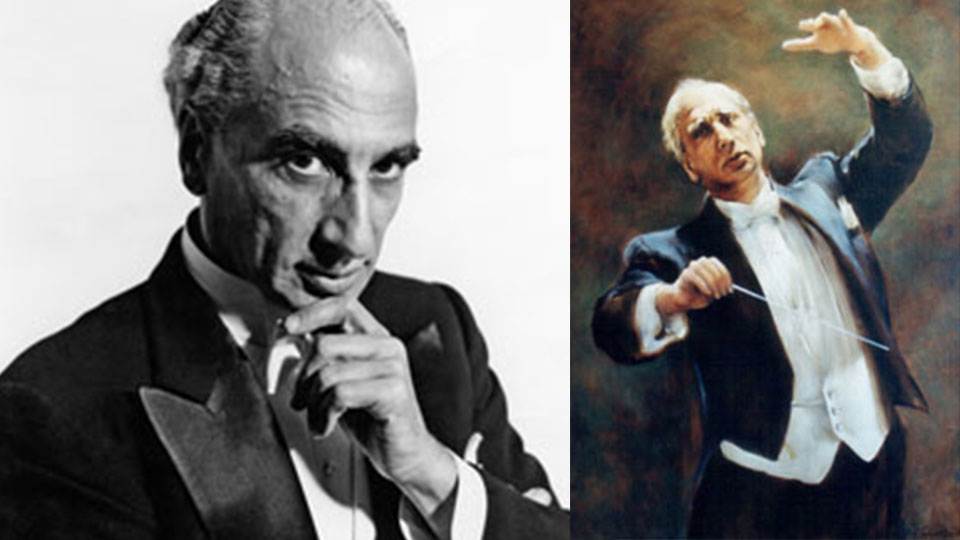
1958: Expansion with Max Rudolf
Max Rudolf begins an eleven-year tenure as Music Director in 1958 that sees expanded personnel and more performances for the CSO. He launches the “8 O’Clock Series” in 1962, founds the Cincinnati Symphony Youth Orchestra in 1964, and aligns the CSO with the Decca recording label in an exclusive contract.

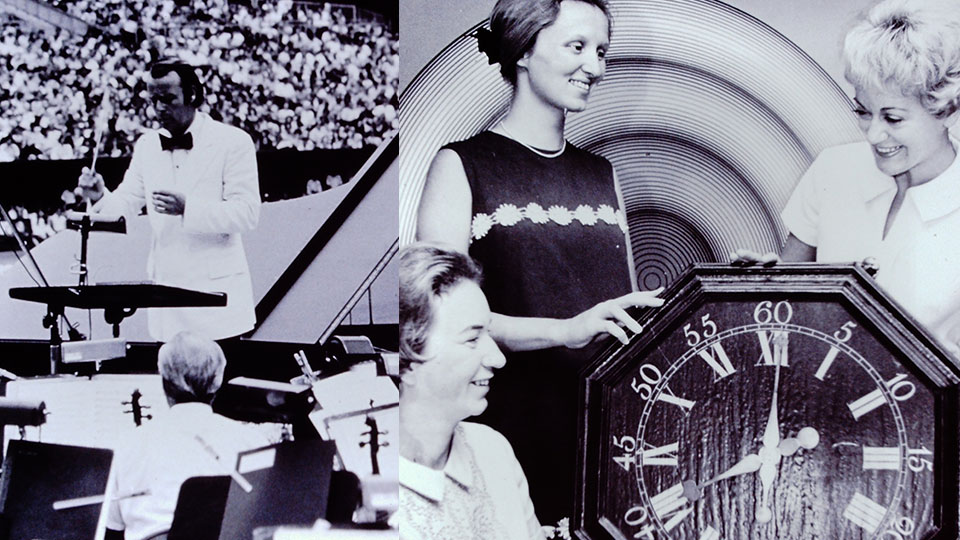
1965: The Kunzel era begins
Max Rudolf invites Erich Kunzel, then a young conductor on the faculty of Brown University, to join the CSO as an associate conductor in 1965. That October, Kunzel conducts his first sold-out "8 O'Clock Pops" concert, paving the way for the Cincinnati Pops’ founding in 1977. Kunzel remains a part of the CSO until his passing in 2009.

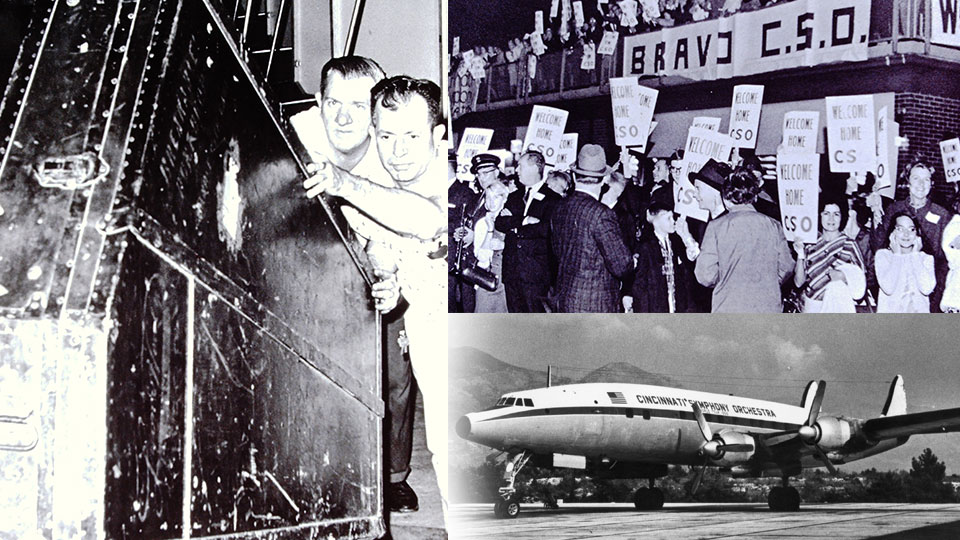
1966: Around the world
The CSO embarks on a ten-week world tour sponsored by the U.S. Department of State and led by conductor Max Rudolf, spanning 33,000 miles and 15 countries and reaching over 100,000 people over the course of 42 concerts. While an enormous undertaking even by today’s standards, the 1966 world tour remains a pivotal moment in the Orchestra's history, firmly establishing the "Cincinnati sound” on the world stage.

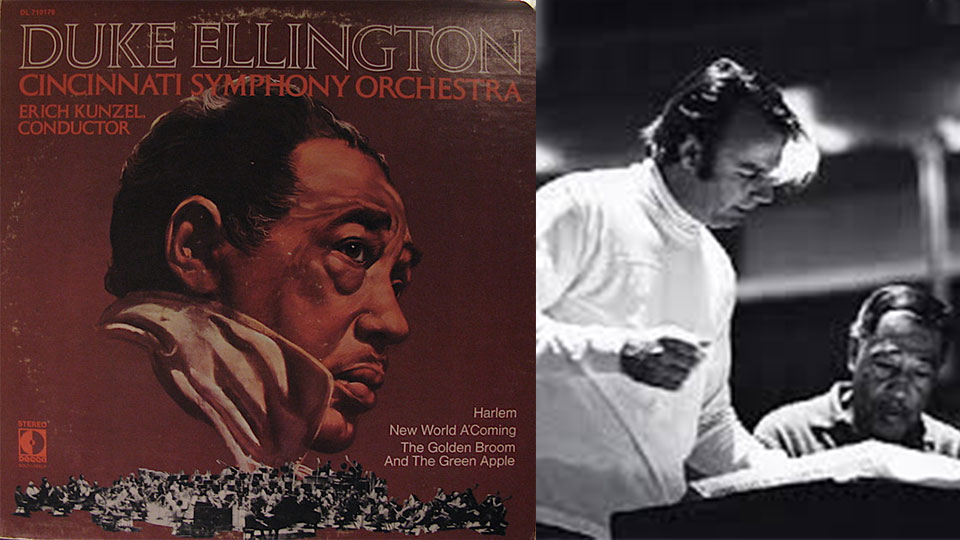
1970: Crossing genres
Following his first appearance as a guest conductor and pianist with the CSO in 1966, jazz great Duke Ellington comes to Cincinnati in May of 1970 to record the Decca album Orchestral Works, with Erich Kunzel and the CSO. The pieces include New World A-Comin’, Harlem and The Golden Broom and the Green Apple. The Los Angeles Times calls it “heroic, unforgettable music.”

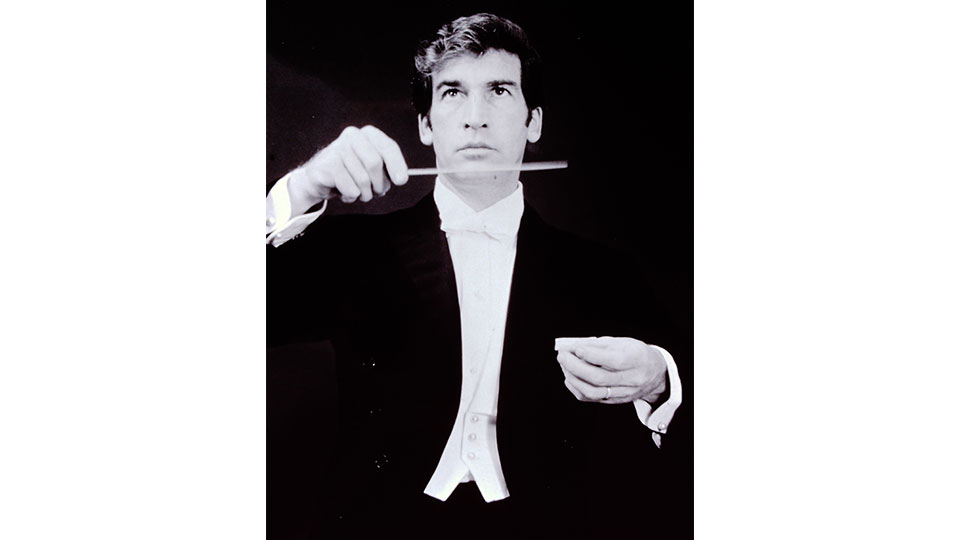
1970: Thomas Schippers raises the bar
Thomas Schippers accepts the post of CSO Music Director in 1970, starting a seven-year tenure. According to The Washington Post, he improves the Orchestra “both in technical matters and repertoire.” His broad background of experience included the directorship of the Festival of Two Worlds in Spoleto, Italy, as well as engagements with the opera houses of La Scala, Vienna, Bayreuth and the Metropolitan Opera, and the philharmonics of New York, London, Israel and Berlin. Until his untimely death in 1977, he brings glamour as well as a high standard of excellence to the Orchestra.
Following Schippers’ passing, Walter Susskind serves as music advisor to the Orchestra from 1978 to 1980, drawing upon his vast experience as music director of the Toronto Symphony Orchestra, the Aspen Festival, and the Saint Louis Symphony Orchestra, and as guest conductor of many of the world's great orchestras.

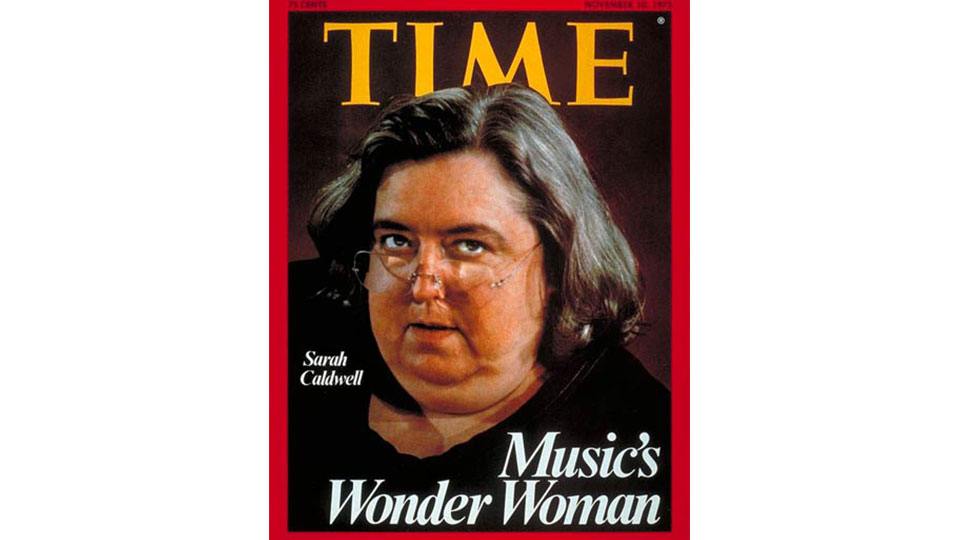
1977: Shattering the ceiling–one pane at a time
Sarah Caldwell becomes the first woman to guest conduct the CSO in 1977, leading a program that includes Schumann's Overture to Genoveva, Stravinsky's Symphony in C Major, and Beethoven's Concerto No. 4 in G Major for Piano and Orchestra. A Time magazine cover story on Nov. 10, 1975, called Sarah Caldwell "Music's Wonder Woman." Two months later, on Jan. 13, 1976, she became the first woman to conduct at the Met.
Years later, Sarah Ioannides becomes the CSO’s first female Assistant Conductor in 2002.

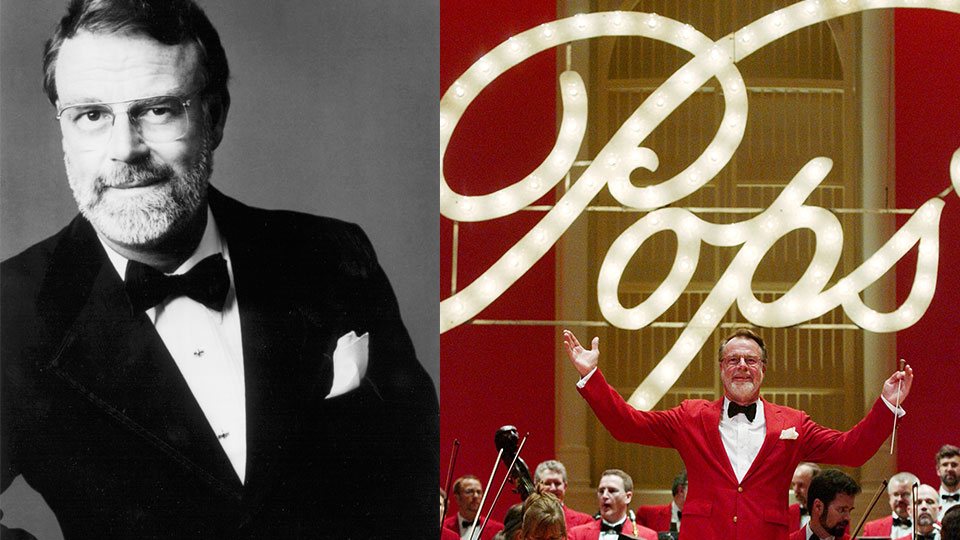
1977: Same orchestra, different color jackets
The Cincinnati Pops, an offshoot of the CSO, is founded in 1977 and comprised of the same musicians under the direction of Erich Kunzel. An estimated 30 million people go on to view eight national telecasts of the Pops on PBS, and the Orchestra develops a massive catalog of recordings, selling over 10 million units around the world.

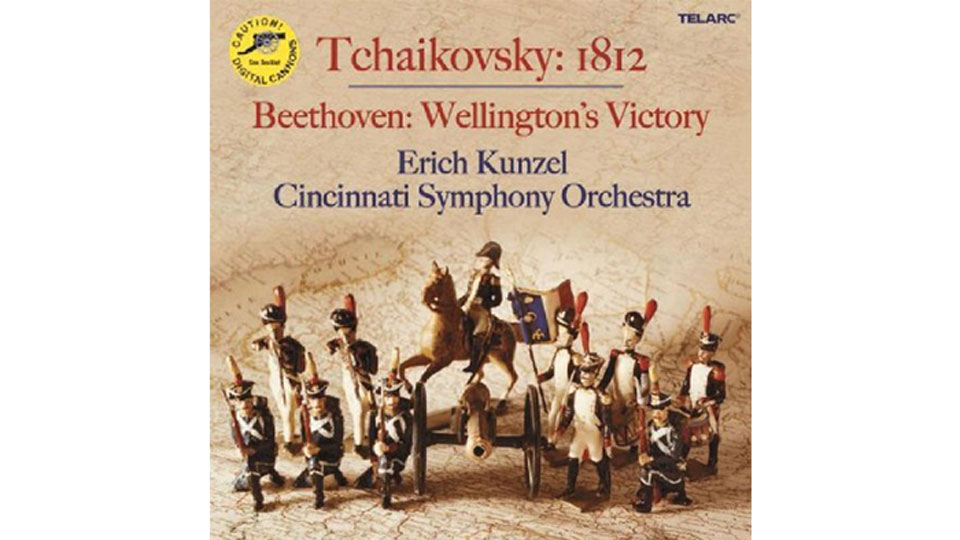
1978: Telarc and the advent of digital recordings
The CSO’s 1812 Overture recording on Telarc from 1978 is a landmark in American classical music recordings. It's the best-selling Telarc record of all time, and ushers in decades of CSO and Cincinnati Pops albums on the Cleveland-based label.

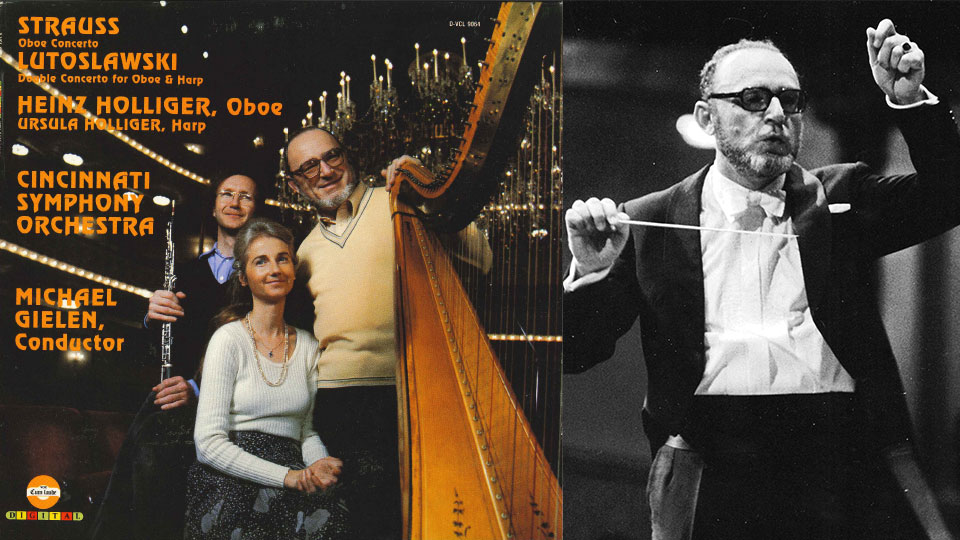
1980: A new decade and a new direction
Michael Gielen becomes CSO Music Director in 1980. His artistic leadership through six seasons continues to assure the CSO's prominence on a national and international level. Gielen and the CSO introduce a number of important world, American, and CSO premieres both in Cincinnati and on tour, including appearances at Carnegie Hall.
Read the review of Gielen’s 1981 album with soprano Kathleen Battle from The Christian Science Monitor.

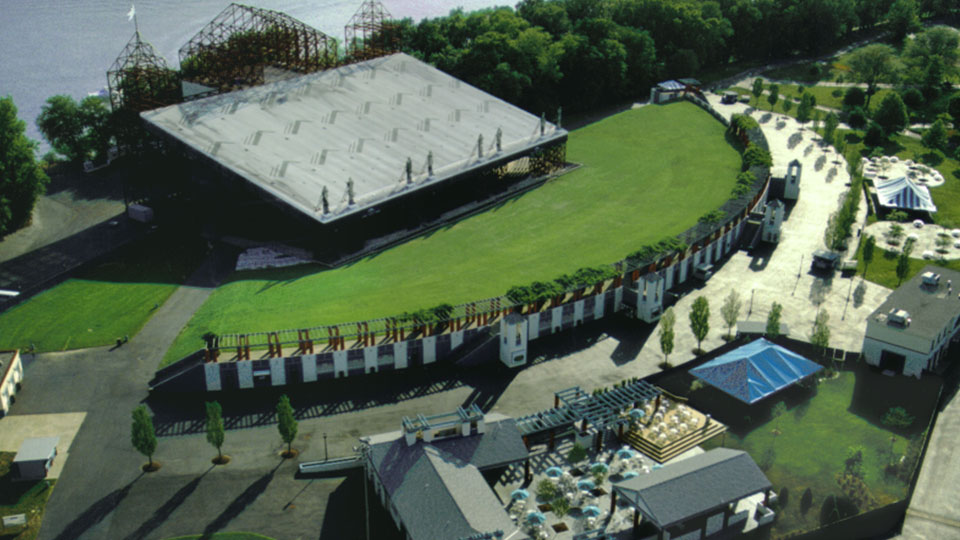
1984: Take me to the river
Riverbend Music Centers opens on July 4, 1984, with Erich Kunzel leading the Cincinnati Pops. Guest artists include jazz great Ella Fitzgerald and astronaut Neil Armstrong, who narrates Copland’s Lincoln Portrait.

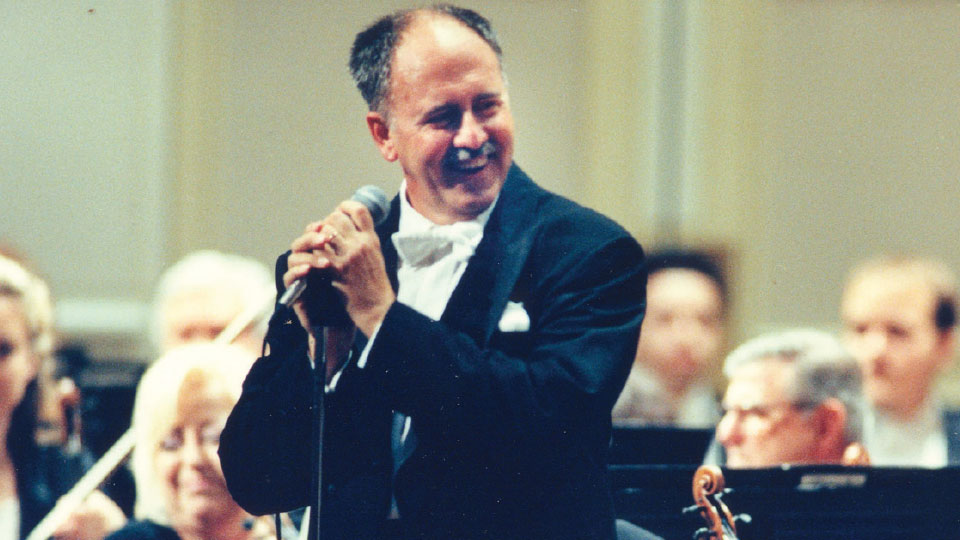
1986: The world listens
Jesús López Cobos begins his 15-year tenure as Music Director in 1986, leading the orchestra into a new era of international acclaim. During his celebrated tenure, the Orchestra undertakes a 20-city European tour in 1995 (the orchestra’s first since 1969) in celebration of the CSO’s centennial season. More tours follow.
Also under López Cobos’ leadership, the CSO is featured for the first time in a national telecast on PBS in 1997 featuring guest pianist Alicia de Larrocha and the music of Ravel, Dvořák and Falla.

1989: Forward with MAC
The CSO’s Multicultural Awareness Council or MAC is founded with the vision of increasing awareness for CSO programs in diverse communities while offering guidance and leadership to the CSO with various inclusion initiatives.

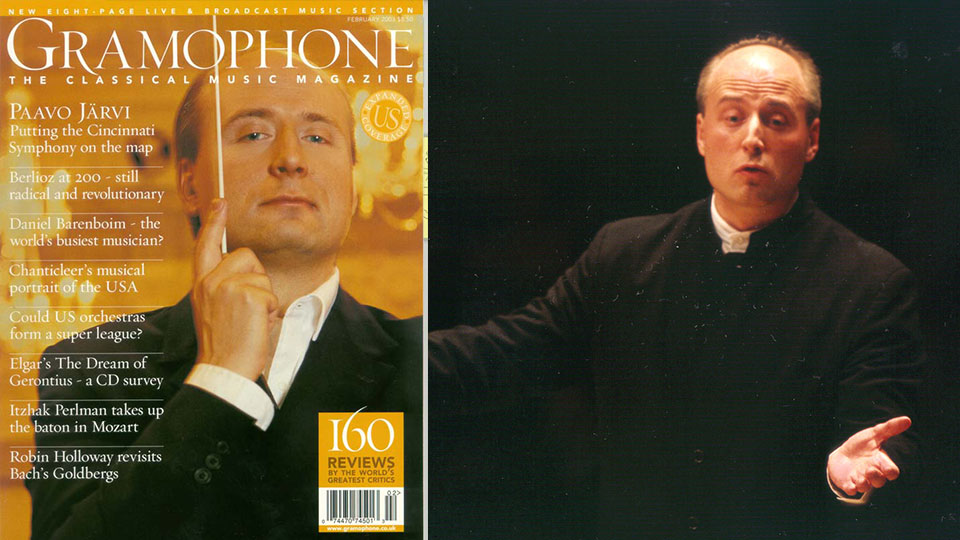
2001: Bravo Paavo
The Estonian-born Paavo Järvi begins his ten-year tenure with the CSO in September 2001. Under his direction, the CSO tours throughout North America, Europe and Japan, performs nationally televised concerts in the U.S. and Japan, and records an extensive discography. He concludes his highly successful tenure as the Orchestra’s 12th Music Director in May 2011, at which point he is named Music Director Laureate.
Järvi’s final two recordings with the CSO, American Portraits in 2010 and Baltic Portraits in 2011, mark the beginning of the CSO’s own recording label following the end of Telarc. The Orchestra’s label is renamed Fanfare Cincinnati in 2012.

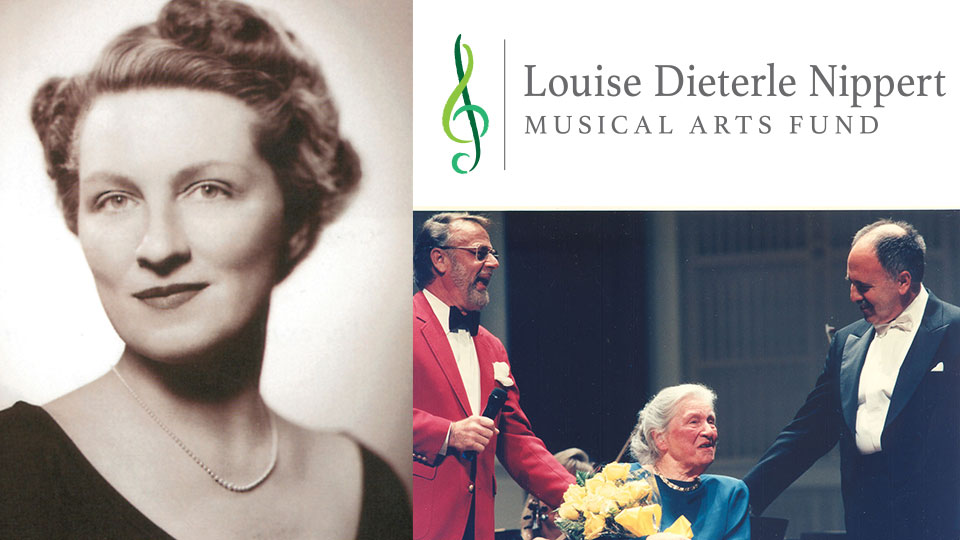
2009: A gift that keeps on giving
When Louise Nippert was honored as a “Great Living Cincinnatian” in 1995, she had said, “The Cincinnati Symphony Orchestra is most important to me, because it is the basis for all the good musical things that happen here.” That core belief is central to the creation of Louise Dieterle Nippert Musical Arts Fund of the Greenacres Foundation in 2009. The transformational $85 million gift makes national headlines and inspires others to support the Orchestra.

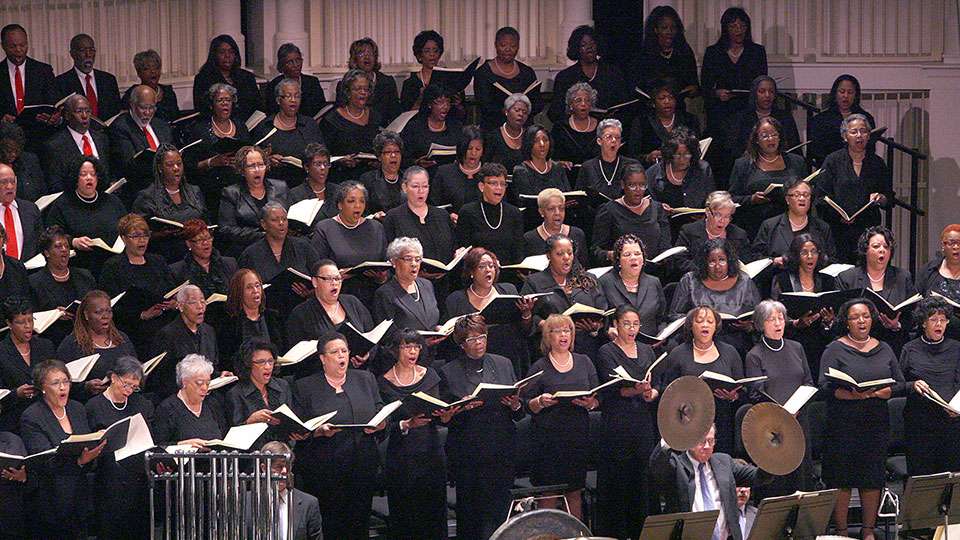
2011: Classical Roots reaches spiritual heights at Music Hall
Classical Roots, a CSO initiative that had featured performances in area churches in previous years, comes to the mainstage at Music Hall in spectacular fashion with a community mass choir made up of singers from area churches coming together with the CSO to celebrate African American music and musicians. It becomes a beloved annual tradition.

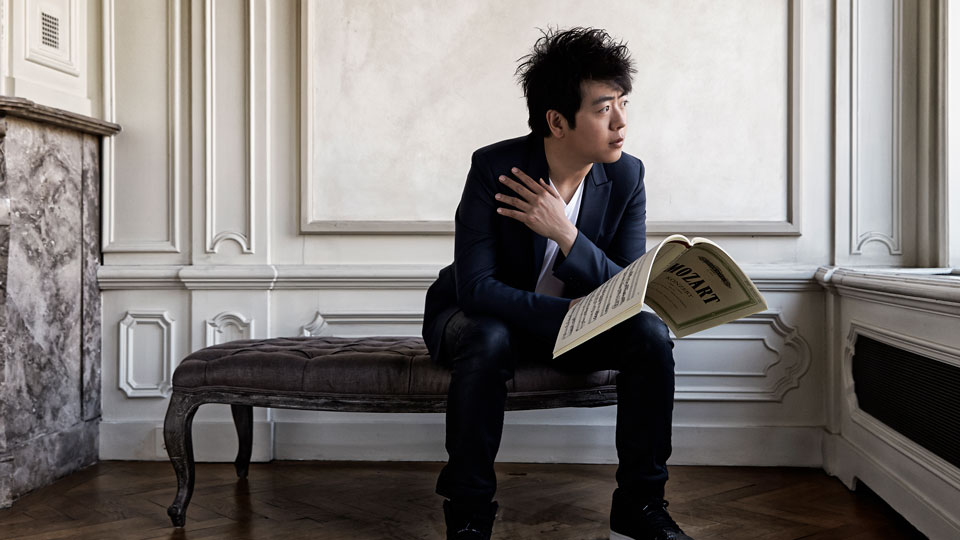
2011: A creative approach and fresh perspectives
Following Paavo Järvi’s departure as Music Director in 2011, the CSO engages creative directors while a music director search commences. For the 2011-12 season, composer Philip Glass, pianist Lang Lang and conductor Rafael Frühbeck de Burgos serve in that capacity. Frühbeck de Burgos returns for the 2012-13 season, and is joined by composer Jennifer Higdon and saxophonist Branford Marsalis. Each creative director curates a unique series.
The Orchestra also commissions and records Glass’ Cello Concerto No. 2, Naqoyqatsi.

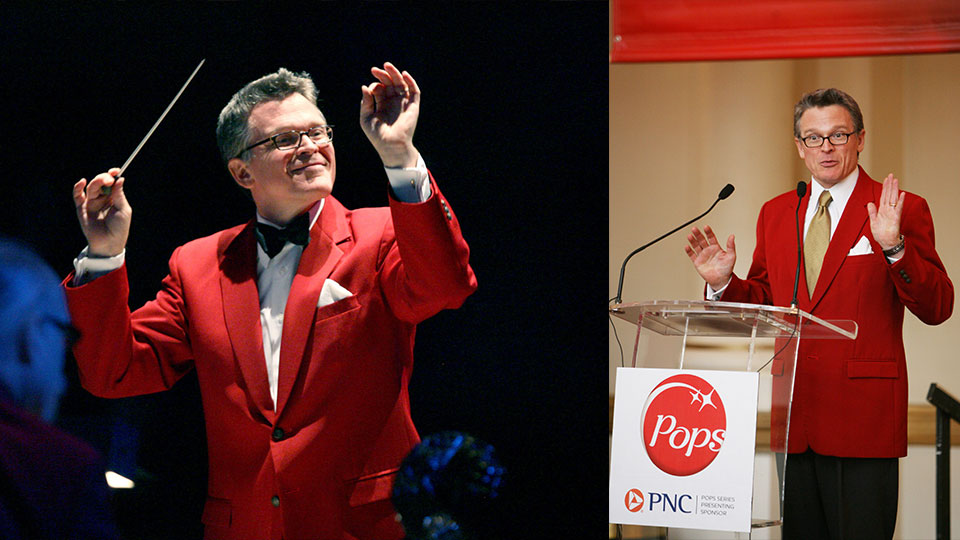
2011: Donning the Red Jacket
John Morris Russell, who had served for a decade as Associate Conductor of the CSO and Pops, is named Cincinnati Pops Conductor, succeeding the late Erich Kunzel.
His tenure includes innovative programs and collaborations, six recordings to date, two tours, and the launch of American Soundscapes, an online video series that has reached over a million music fans around the world since 2016.

2013: Welcome Louis and LUMENOCITY
The French conductor Louis Langrée becomes Music Director of the CSO in 2013. To mark this momentous occasion, the CSO presents the inaugural LUMENOCITY, a live concert in Washington Park with stunning images projected onto the façade of Music Hall that garners global attention and 35,000 attendees over two nights. New iterations of LUMENOCITY are presented in 2014, 2015 and 2016, reaching tens of thousands each time and tens of thousands more through television broadcasts and internet streaming.
Langrée’s tenure in Cincinnati is marked by bold initiatives including the Pelléas et Mélisande Trilogy, MusicNOW collaboration, the Concertos for Orchestra project, which yields three new works and an album that garners two Grammy nominations, and the Beethoven Revolution, which pairs Beethoven’s symphonies with new commissions.
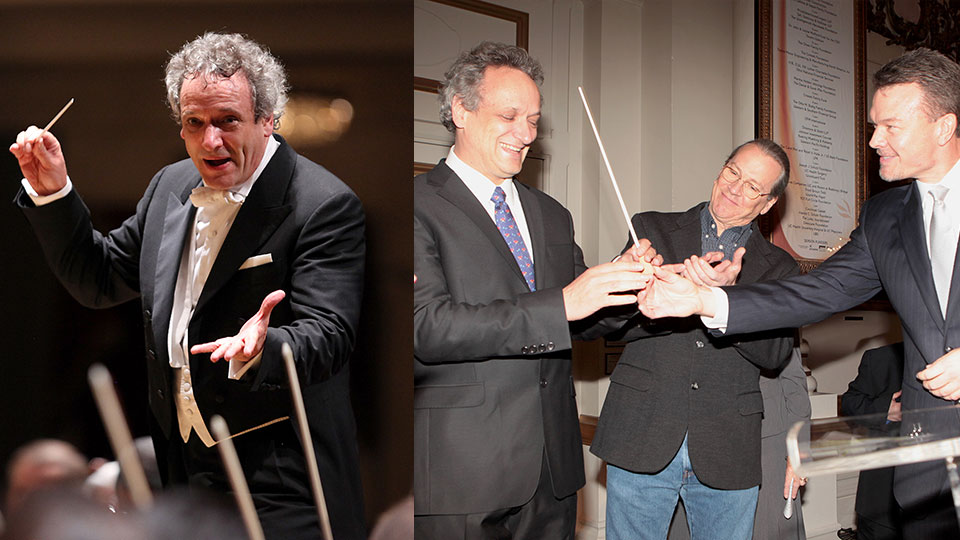
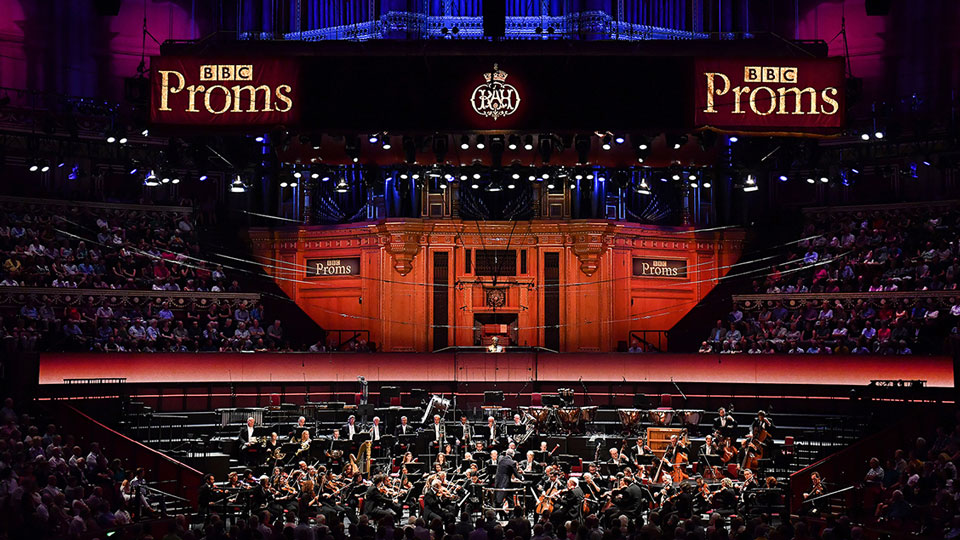
2017: CSO performs at the BBC Proms
Committed to presenting the music of our time, Langrée and the CSO will have commissioned or co-commissioned 32 new works between the start of his tenure as Music Director in 2013 and the conclusion of the CSO’s 125th anniversary season in May of 2020, including compositions by Julia Adolphe, Daníel Bjarnason, David Lang, Zhou Tian and Caroline Shaw.
Langrée tours with the CSO on three continents including appearances at New York’s Lincoln Center for the Great Performers series, the Hong Kong Arts Festival, Edinburgh International Festival, BBC Proms (London) and La Seine Musicale (Paris).

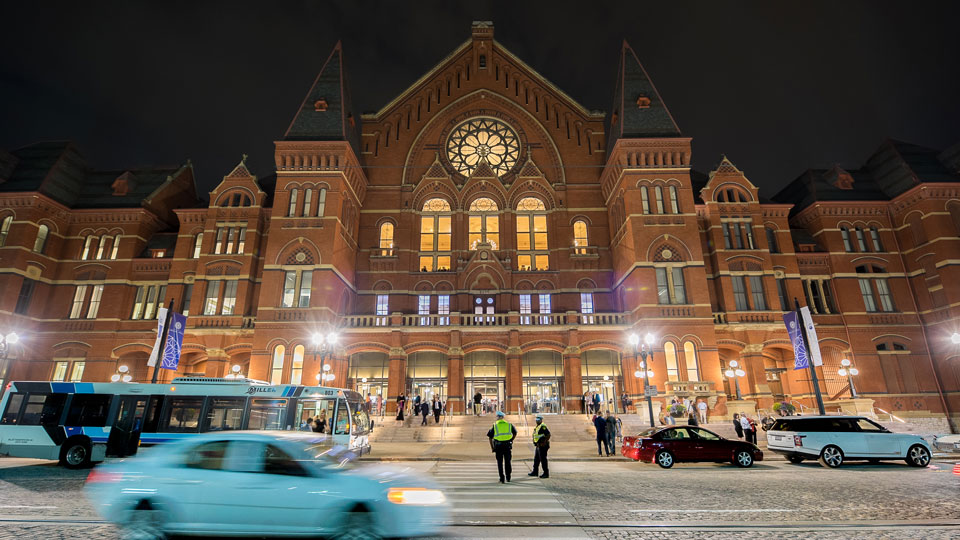
2017: Music Hall reborn
After being closed for an extensive, eighteen-month renovation, the CSO triumphantly returns to Music Hall in October of 2017. According to The New York Times, “Cincinnati shows the way” with this renovation.
The Orchestra had performed at the Taft Theatre in the 2016-17 season while construction was underway.

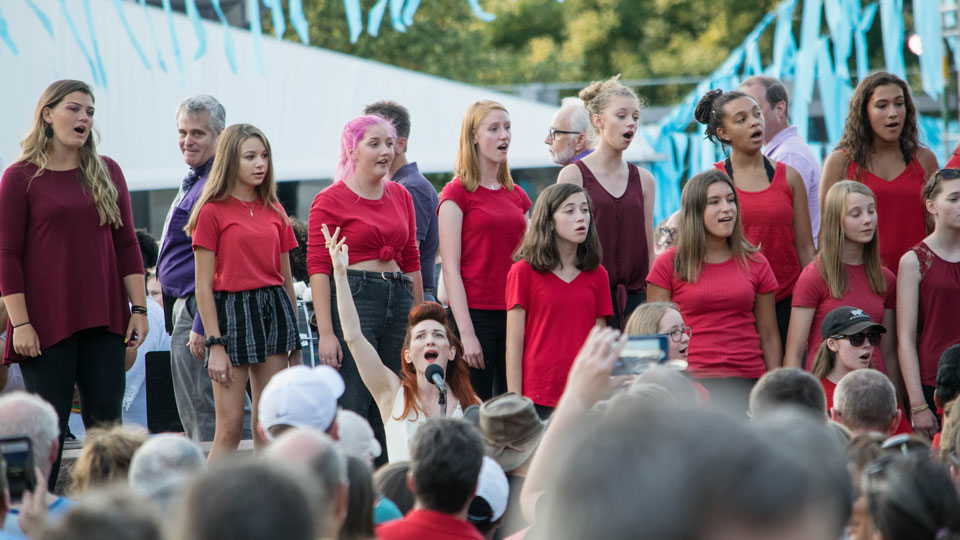
2019: Looking around and looking ahead
In August, the CSO kicks-off its 125th anniversary season with a first-of-its kind outdoor celebration in Ziegler Park and Washington Park, underscoring newly articulated core values to be inclusive, inspiring and innovative. Featuring more than 600 local artists from more than 20 music and dance ensembles, the event creates a musical environment to explore. An estimated 8,000 people attend CSO Look Around, making it a highlight of Cincinnati’s summer season.
One Look Around explorer says, "This kind of event shows enormous potential in what we can accomplish when we reach beyond traditional performative boundaries."
The CSO thanks the following volunteers for their research on this timeline: Patty Wagner, Nancy Wagner, Tom Ziegler, Tom Braun
